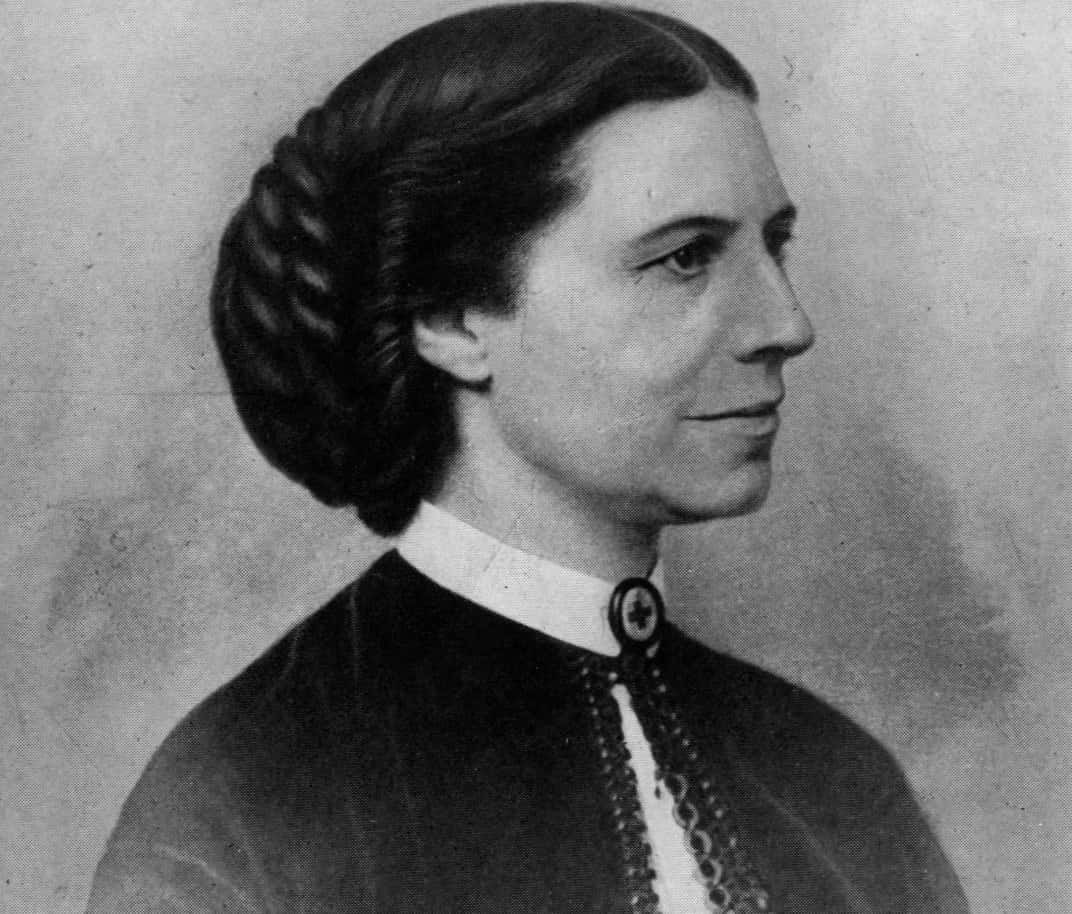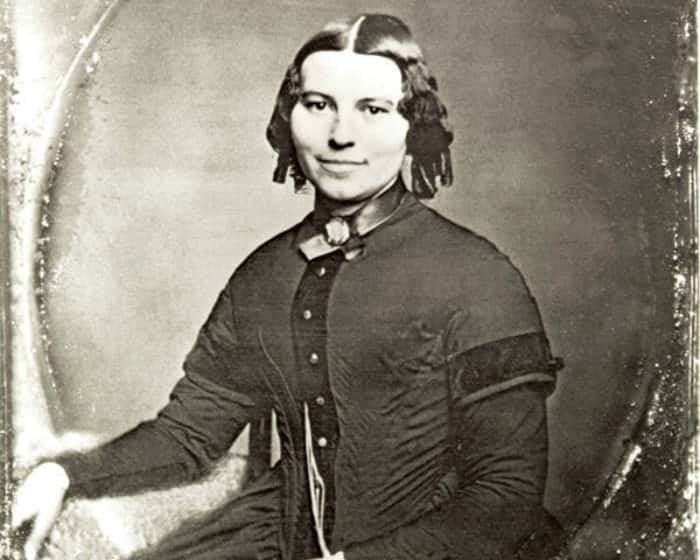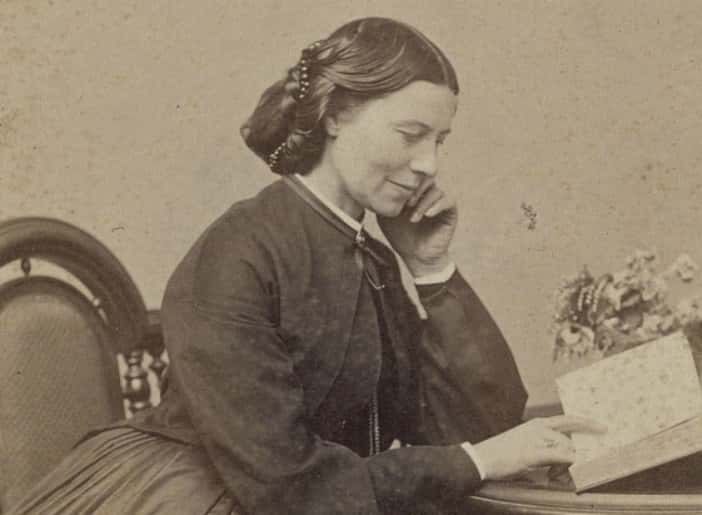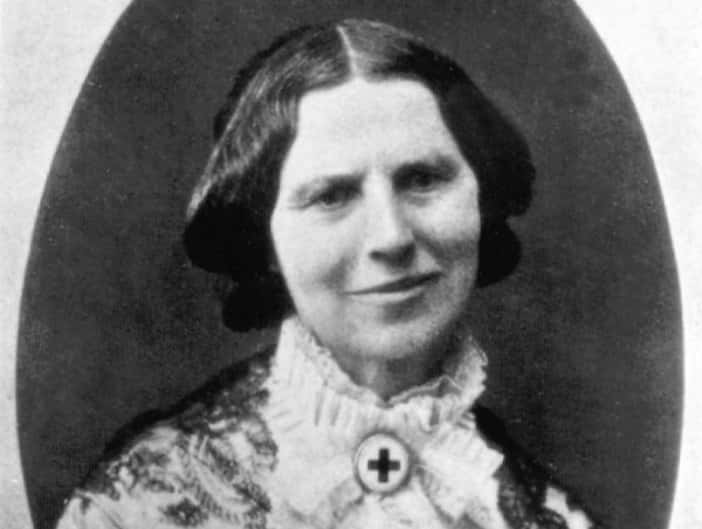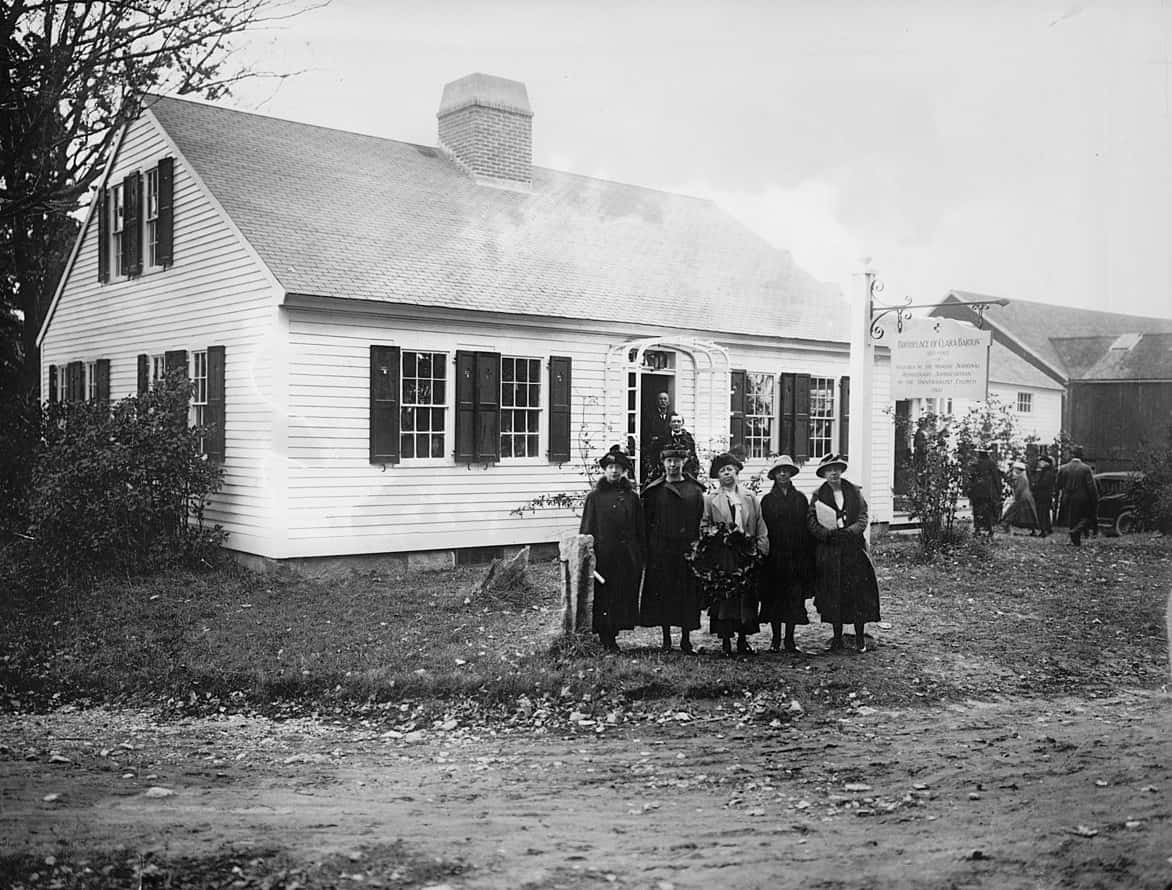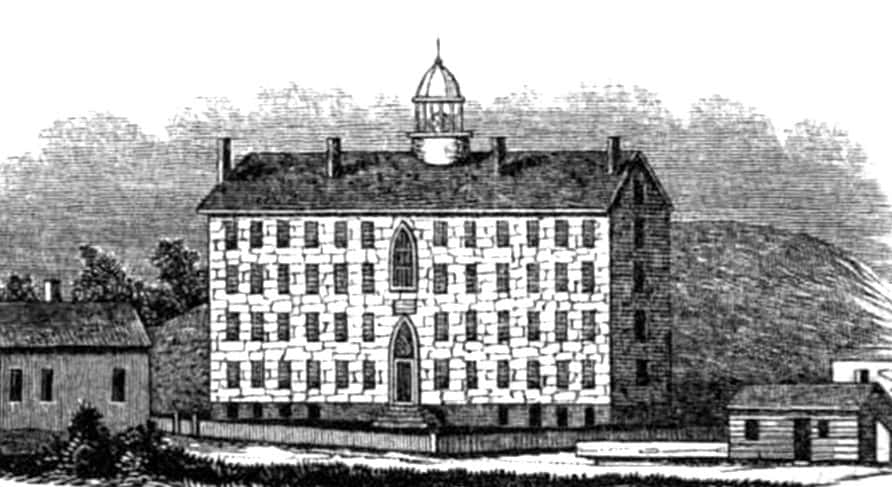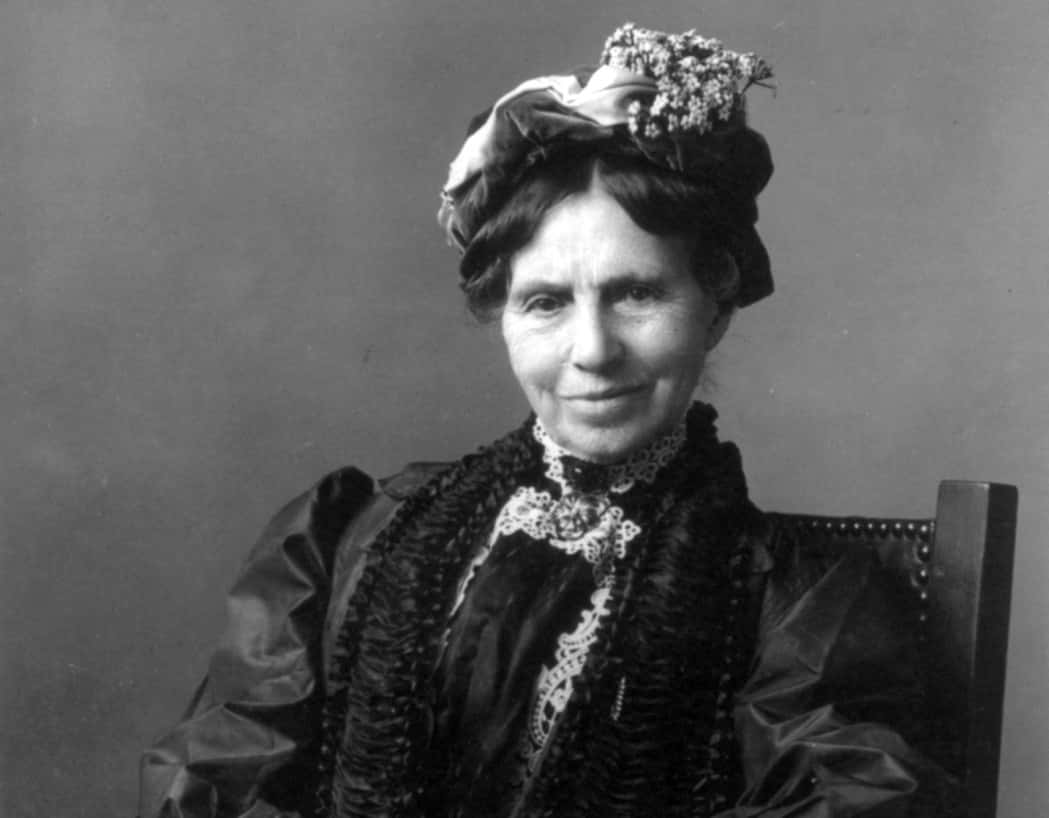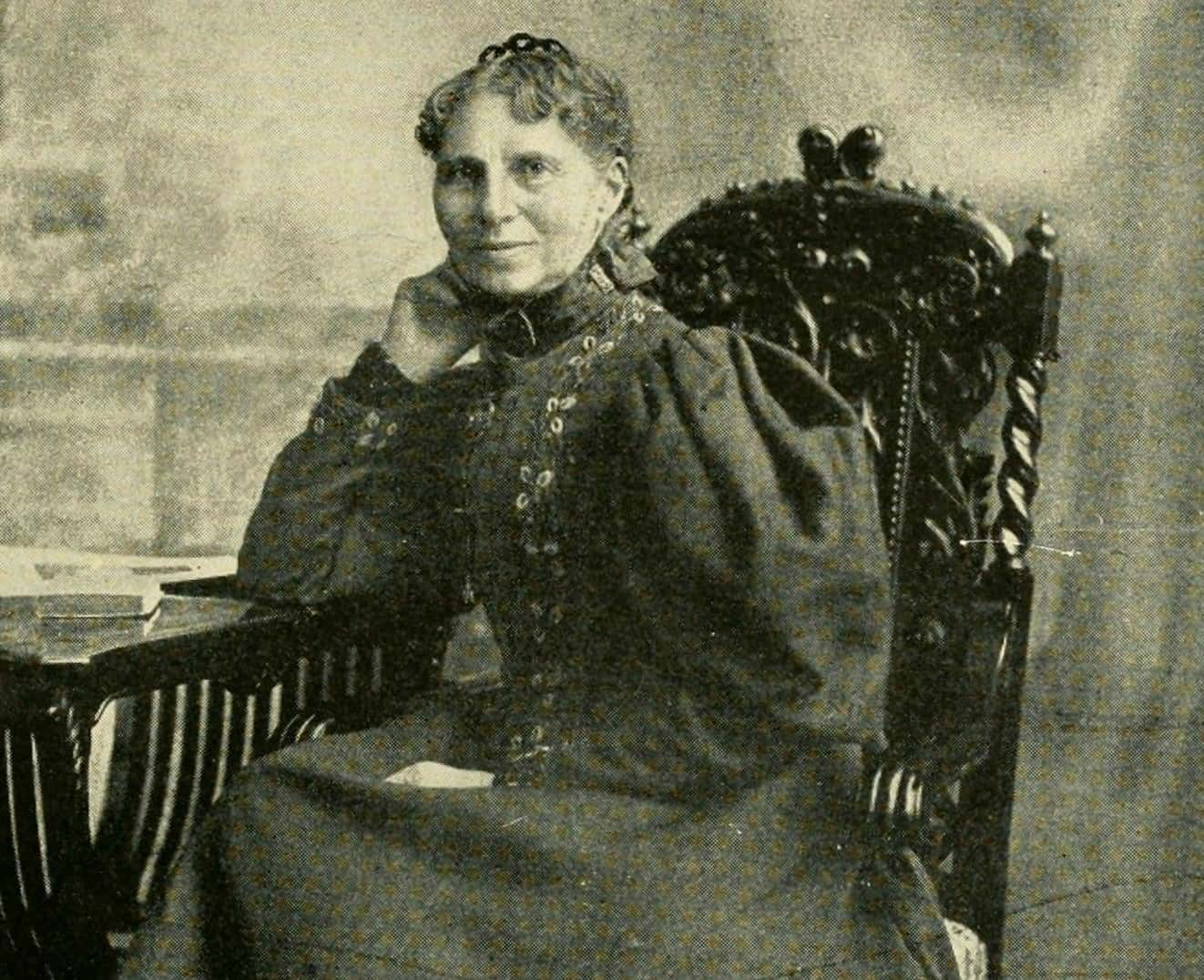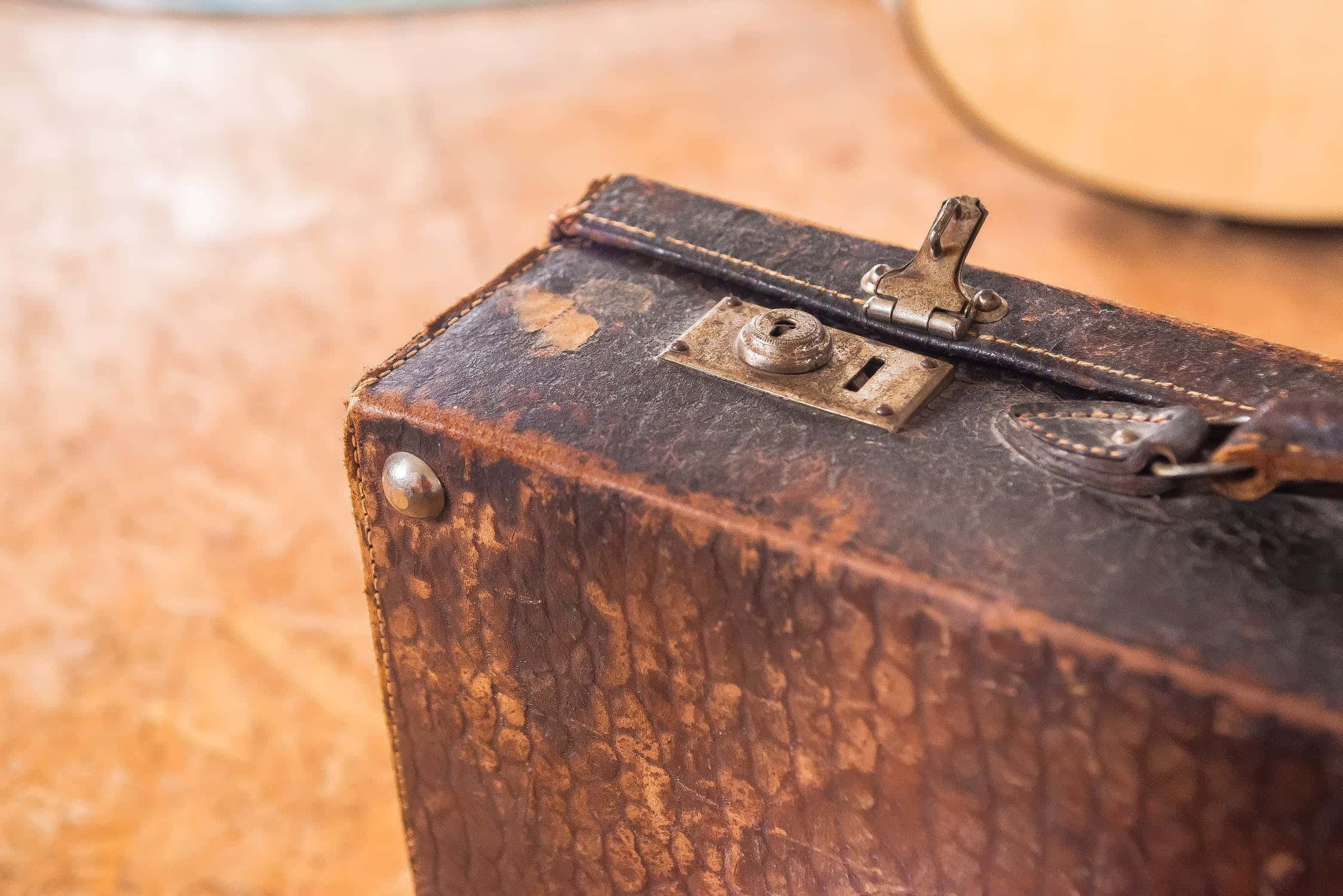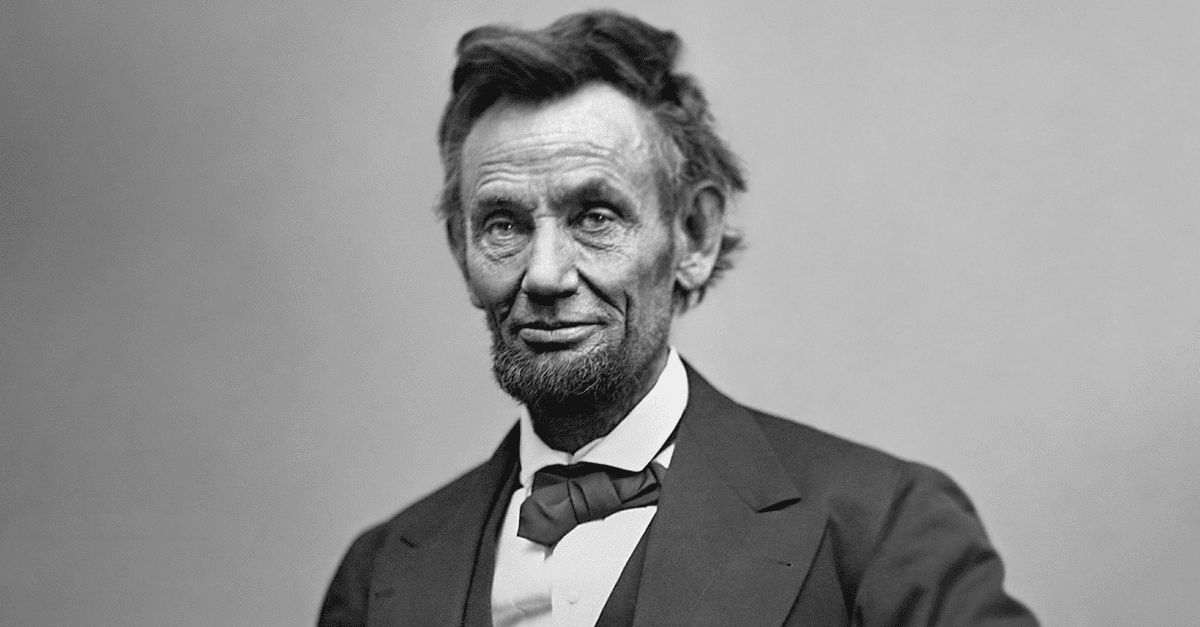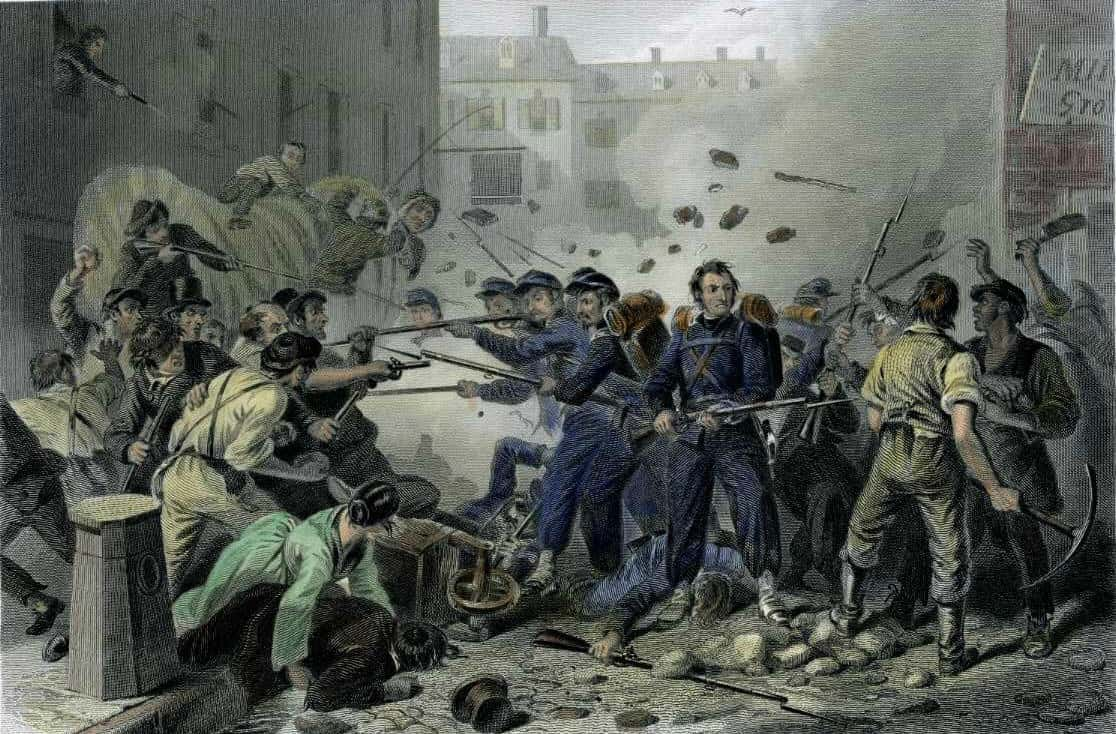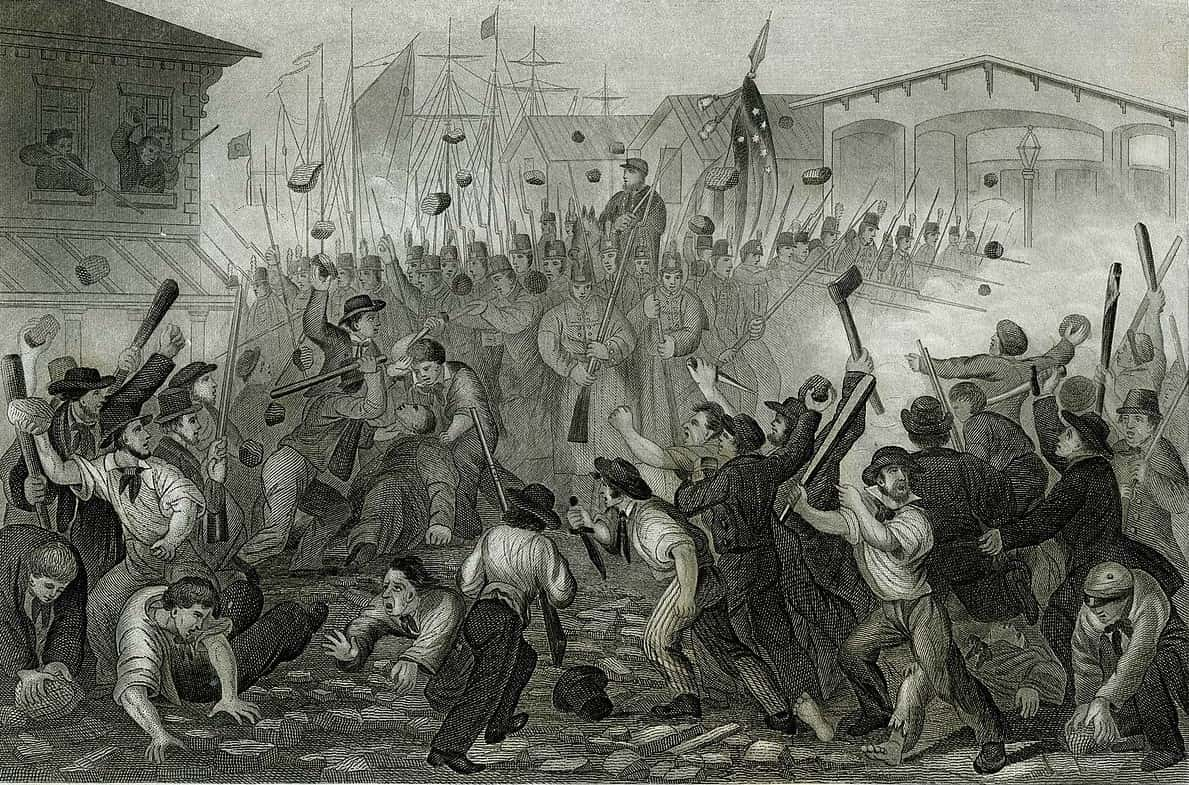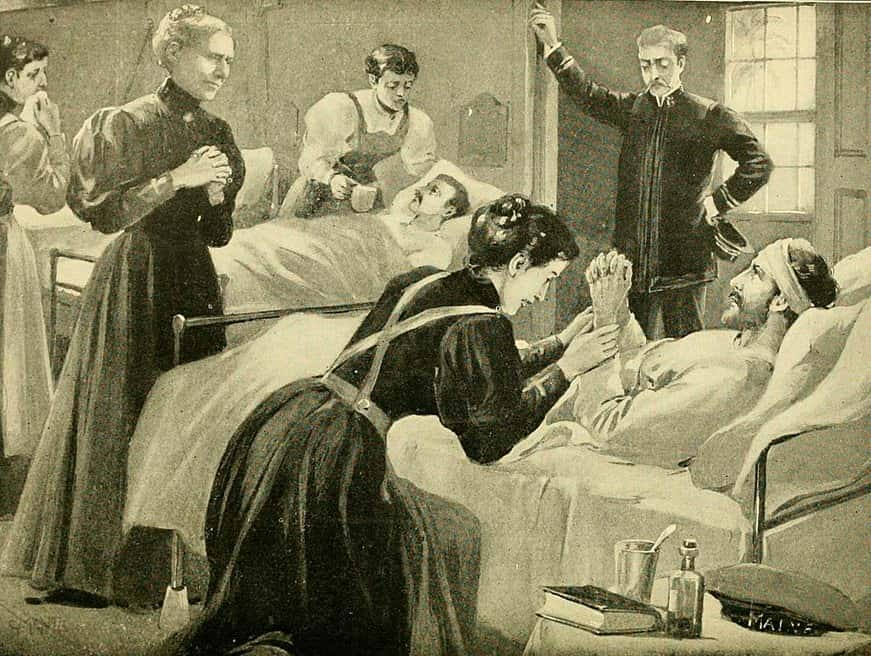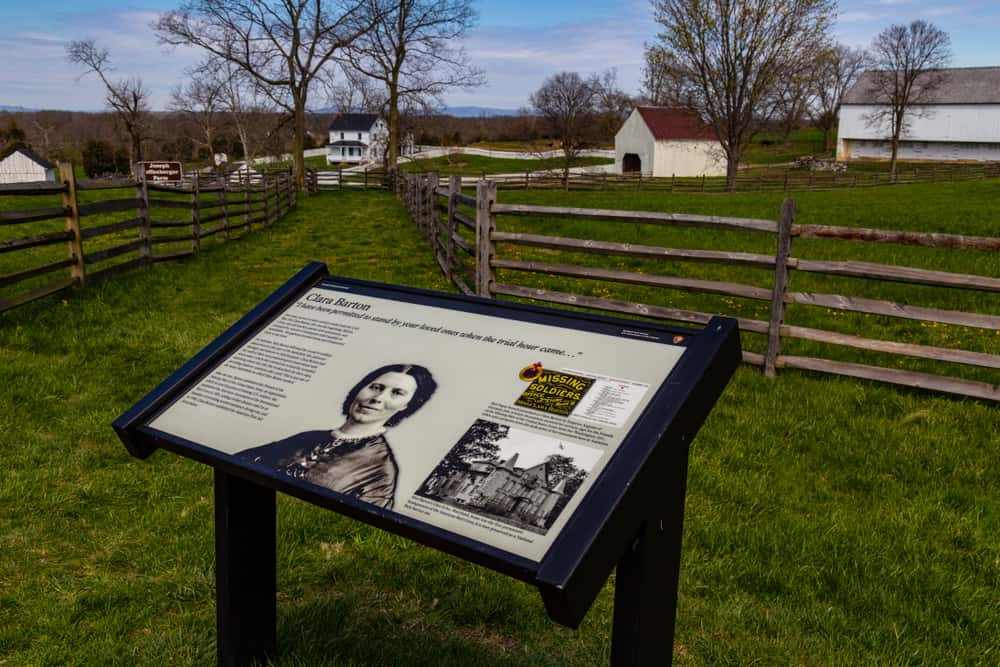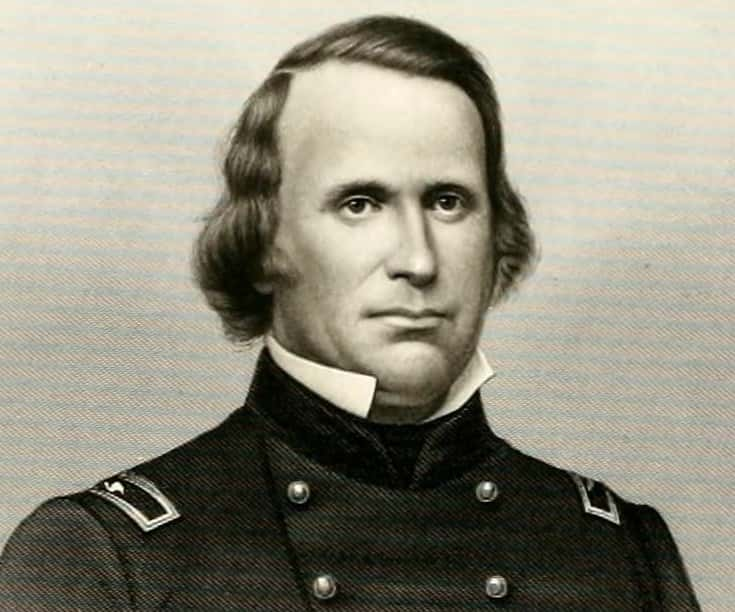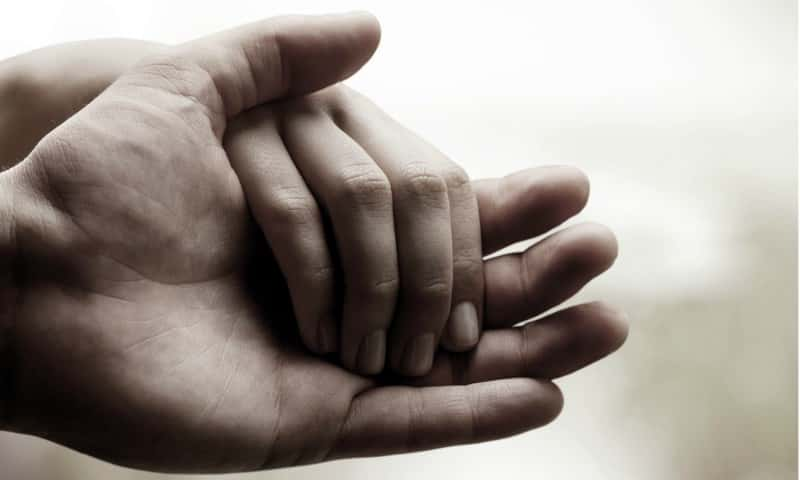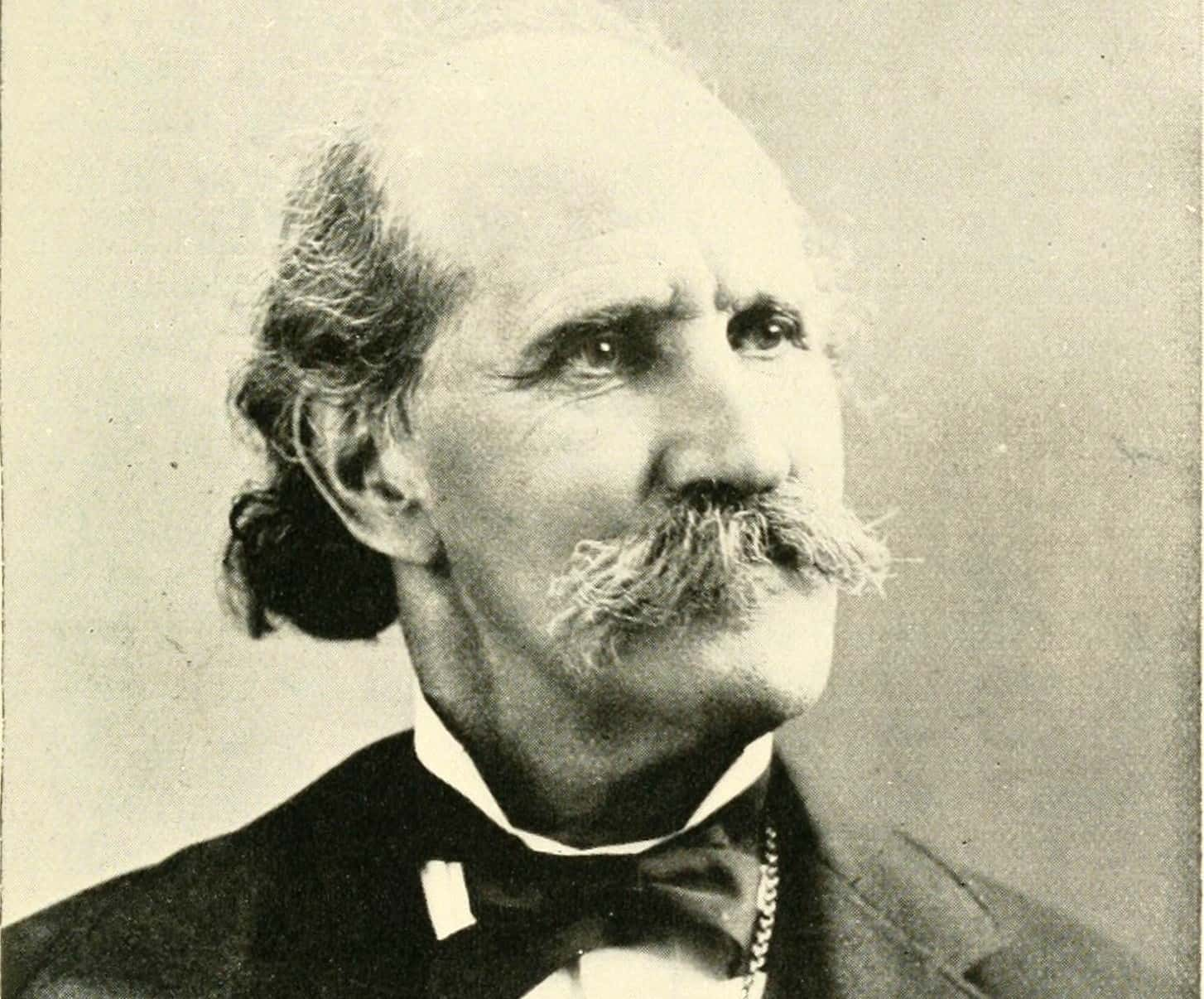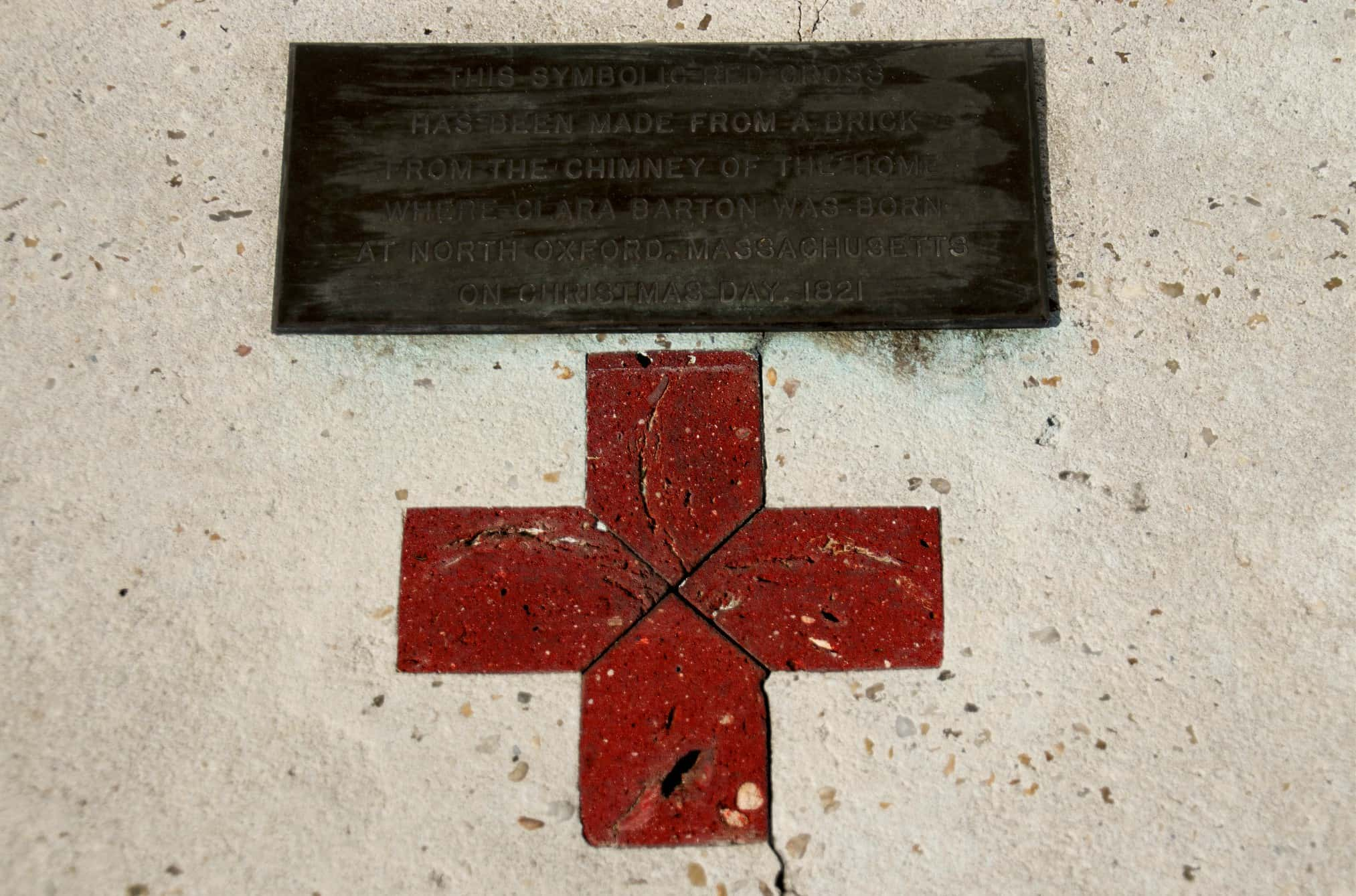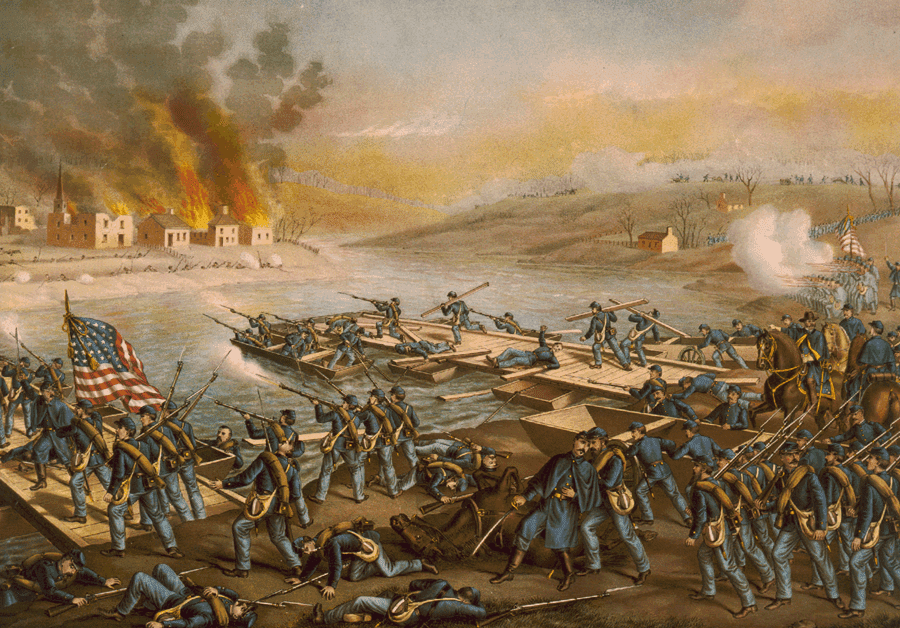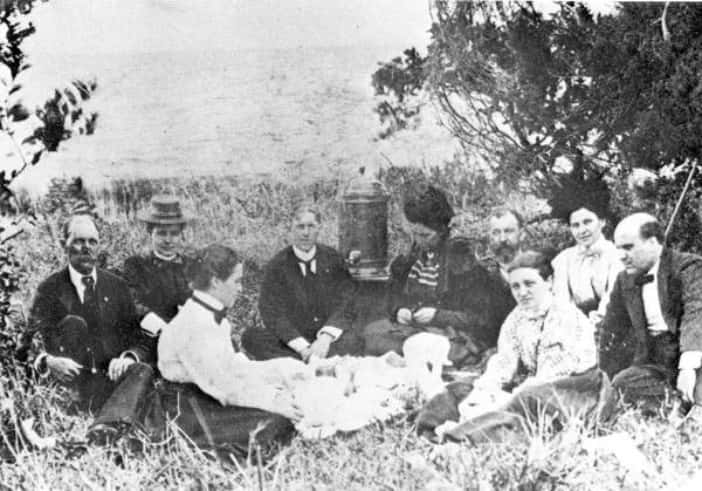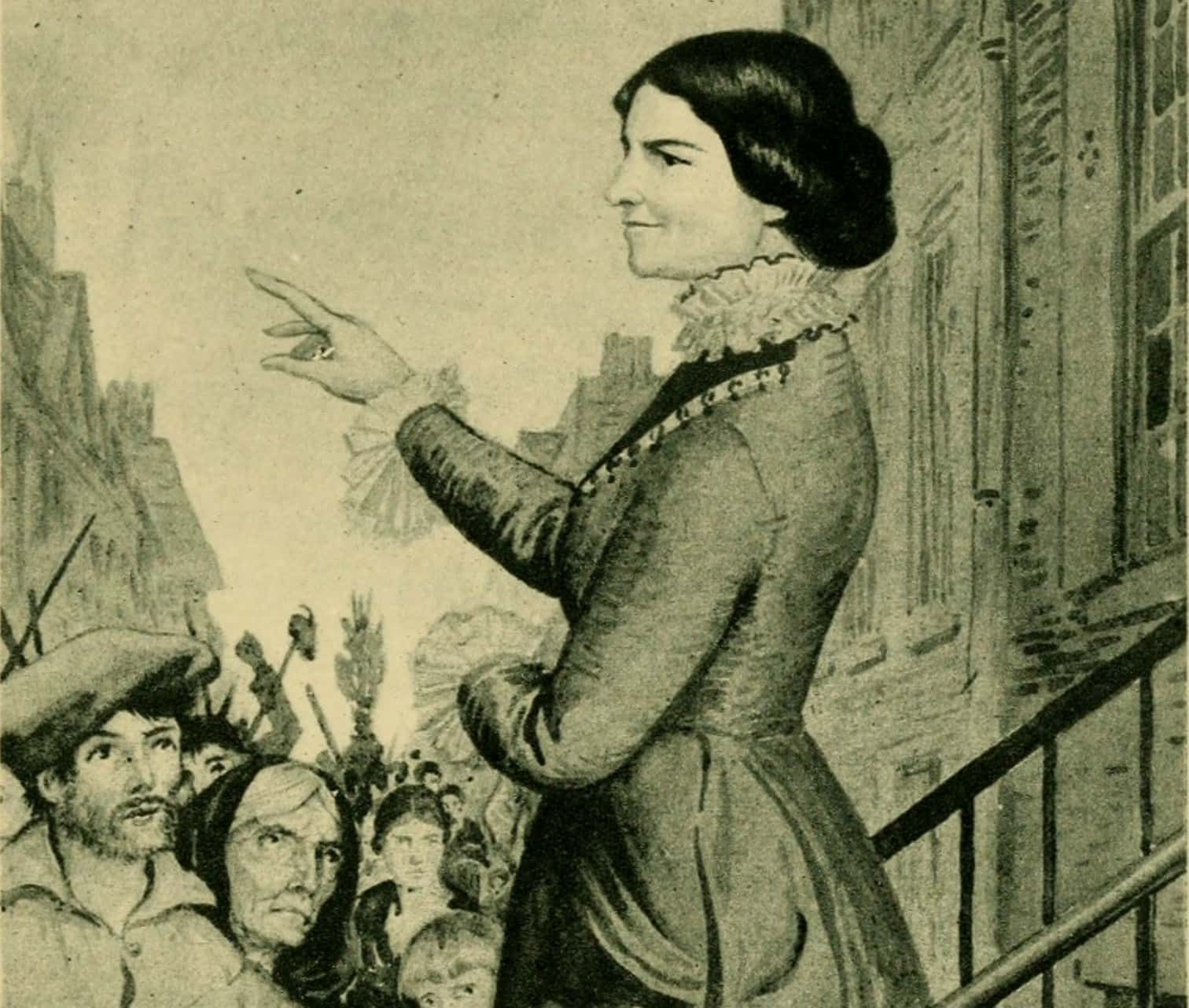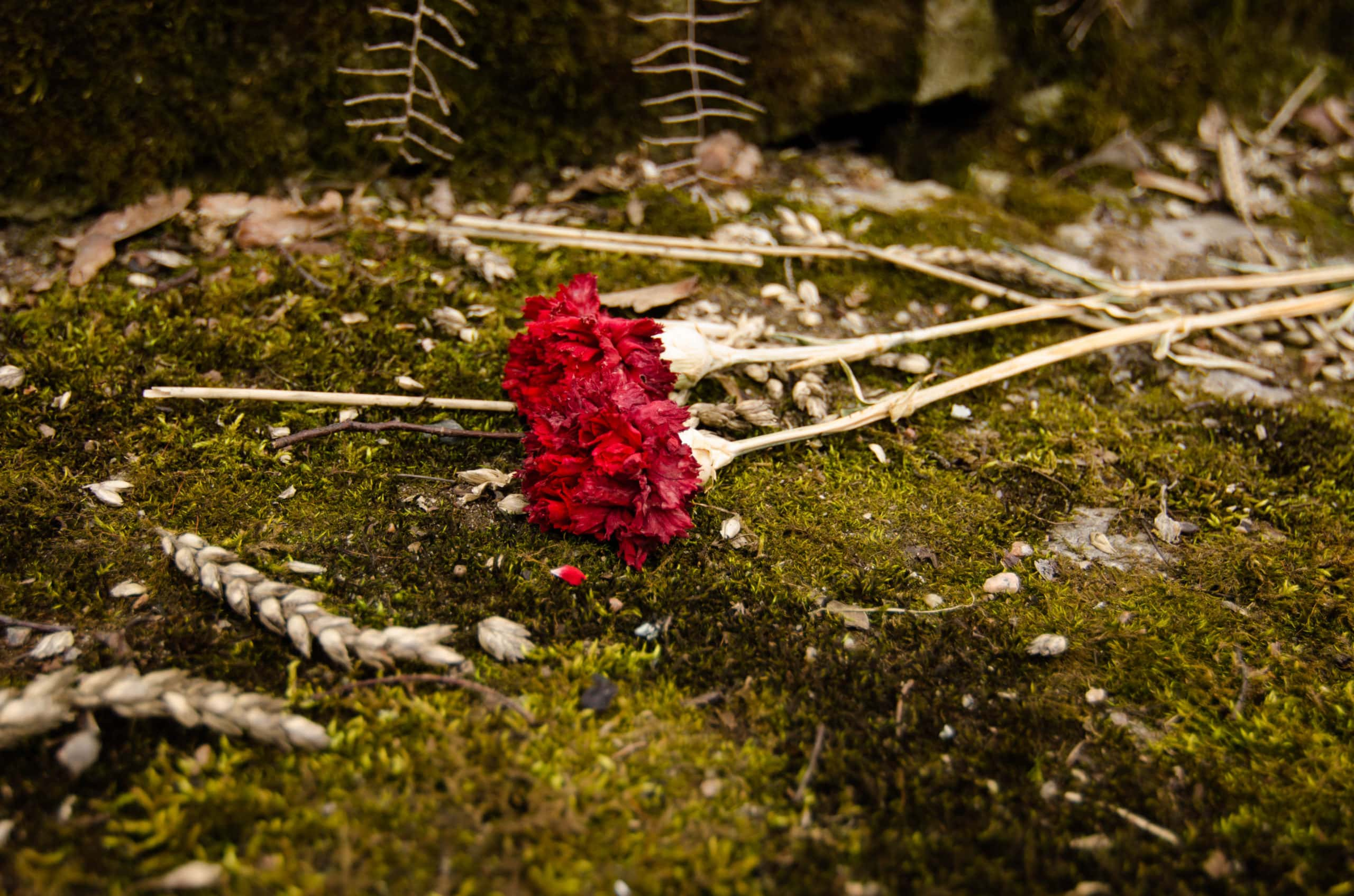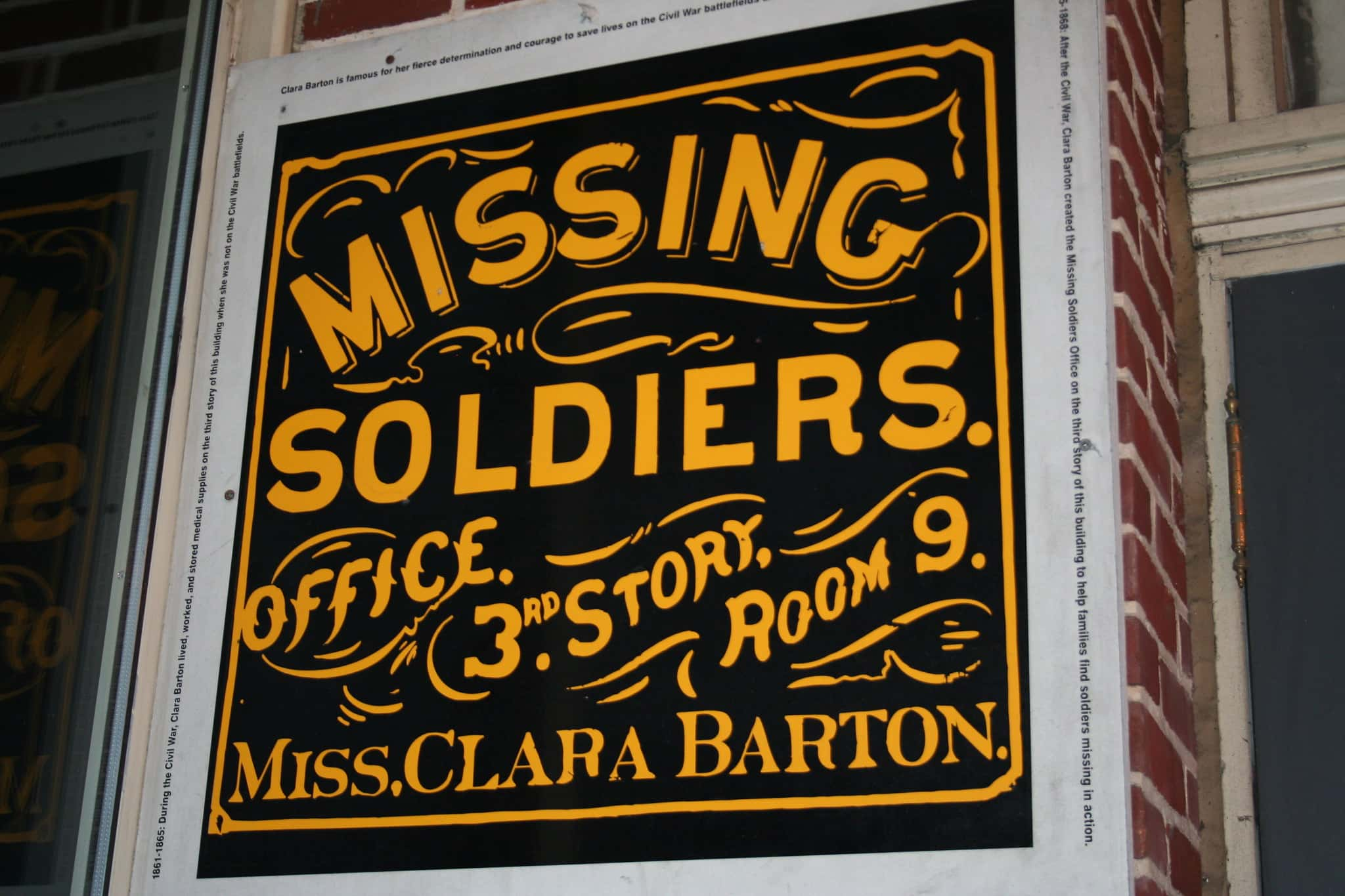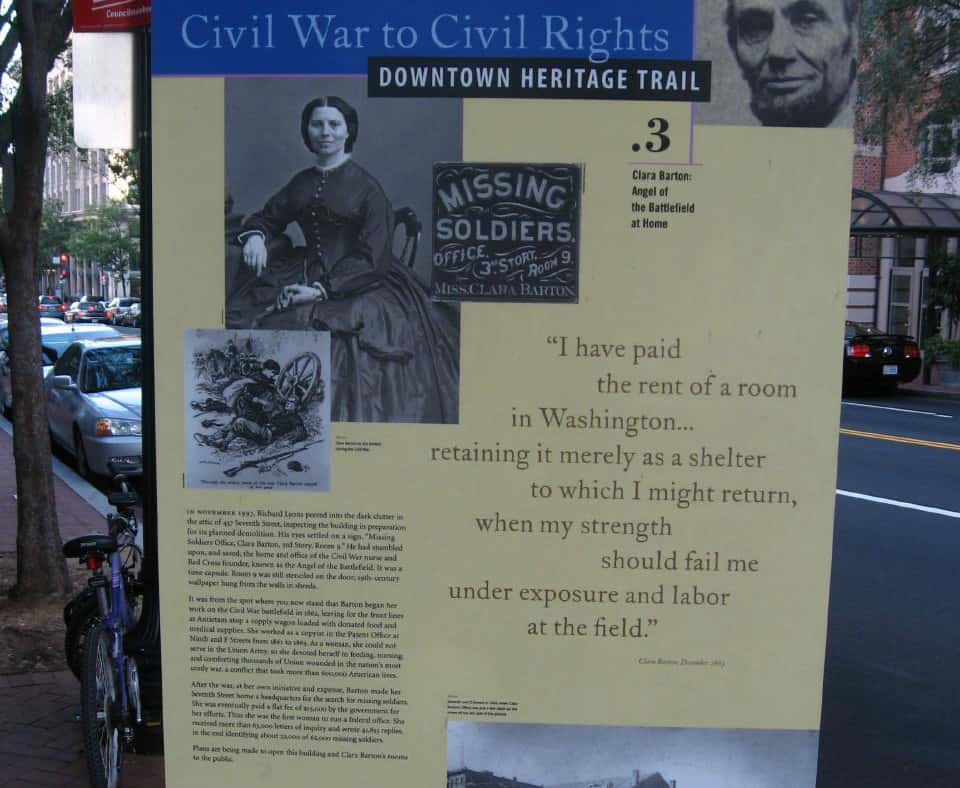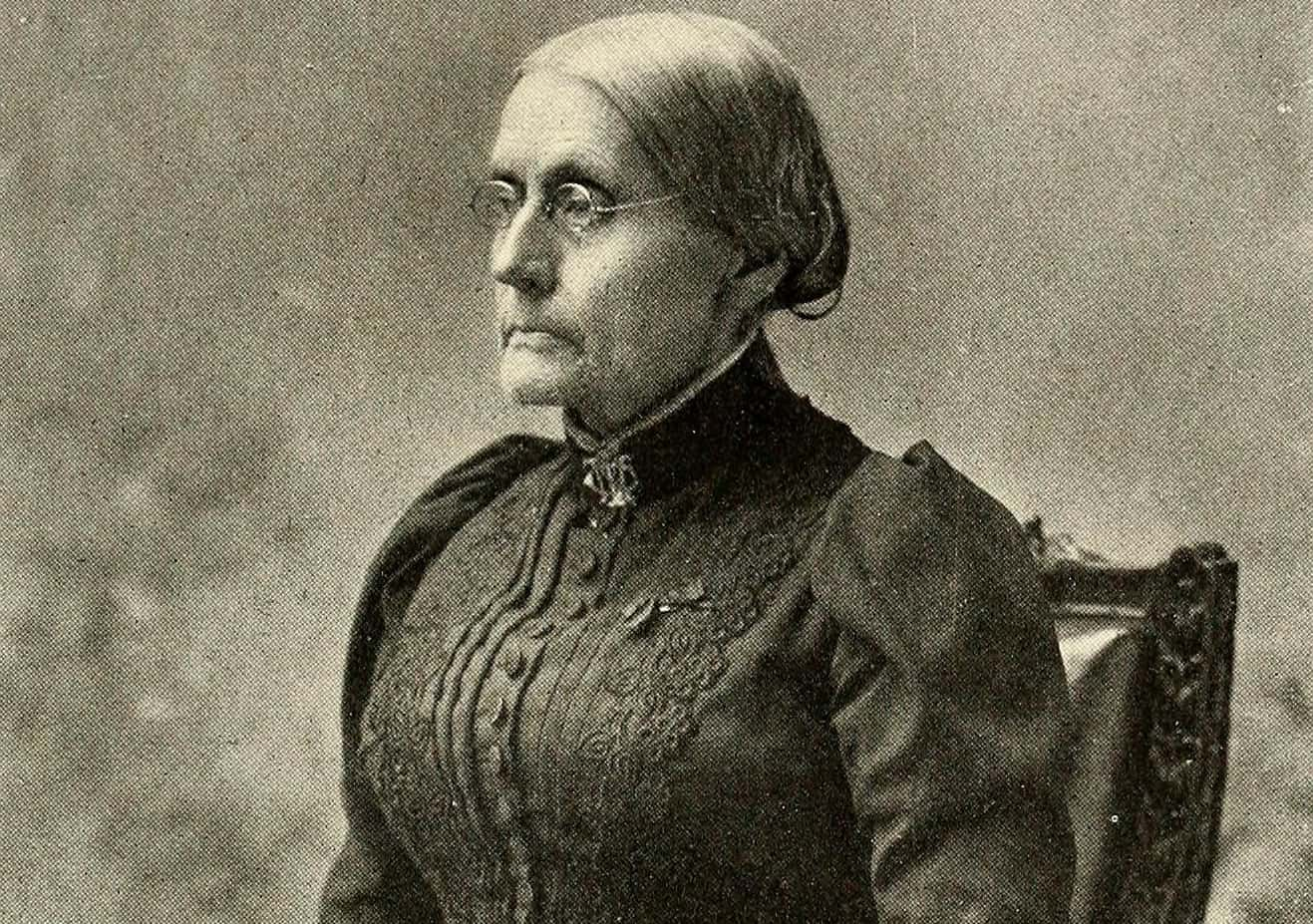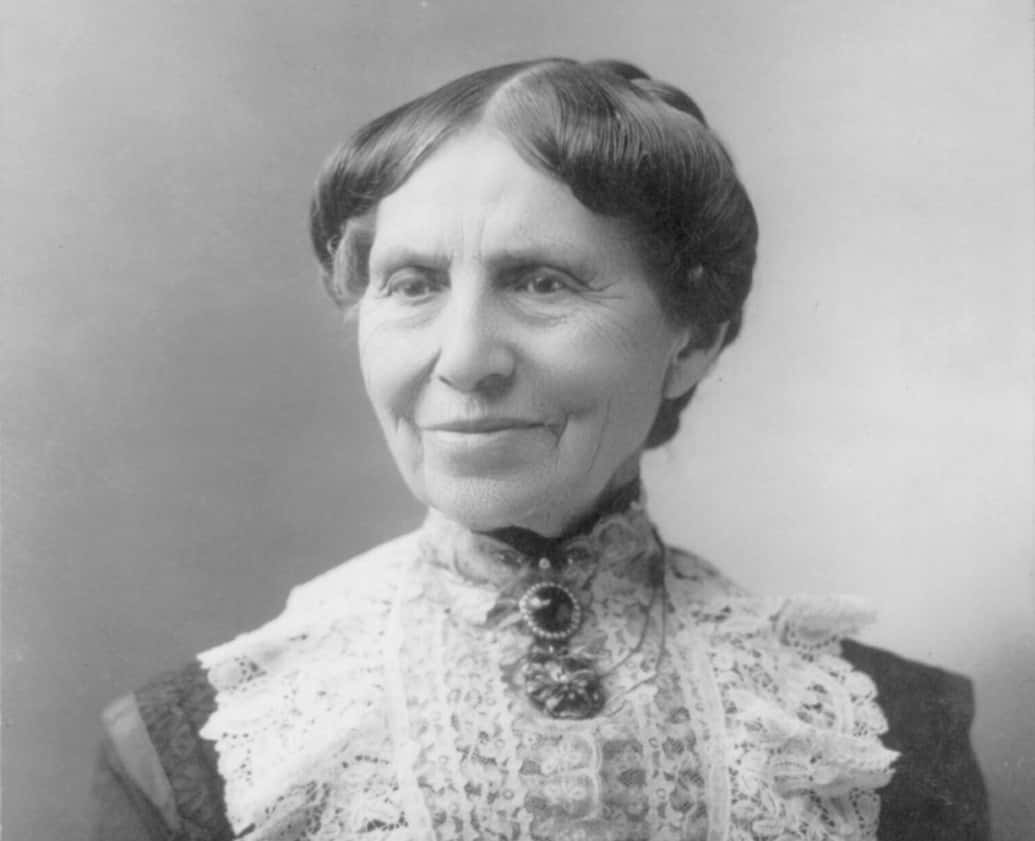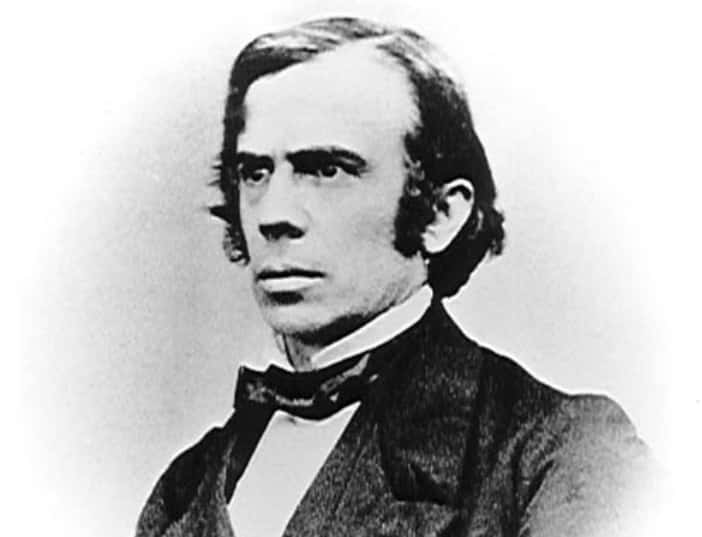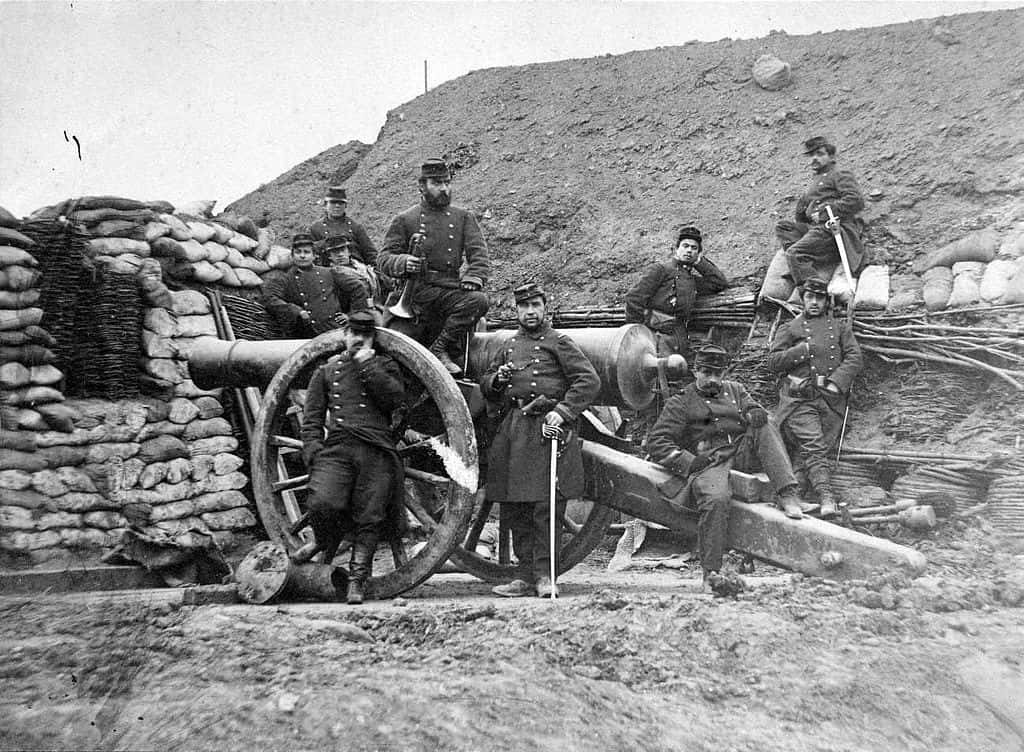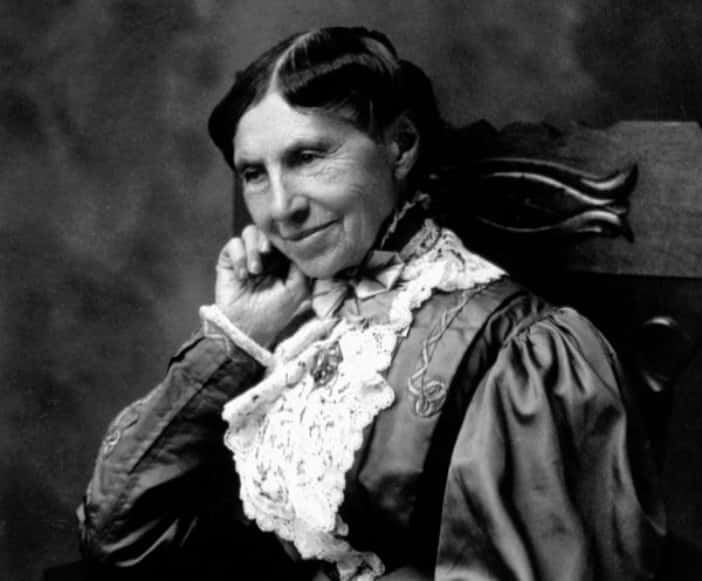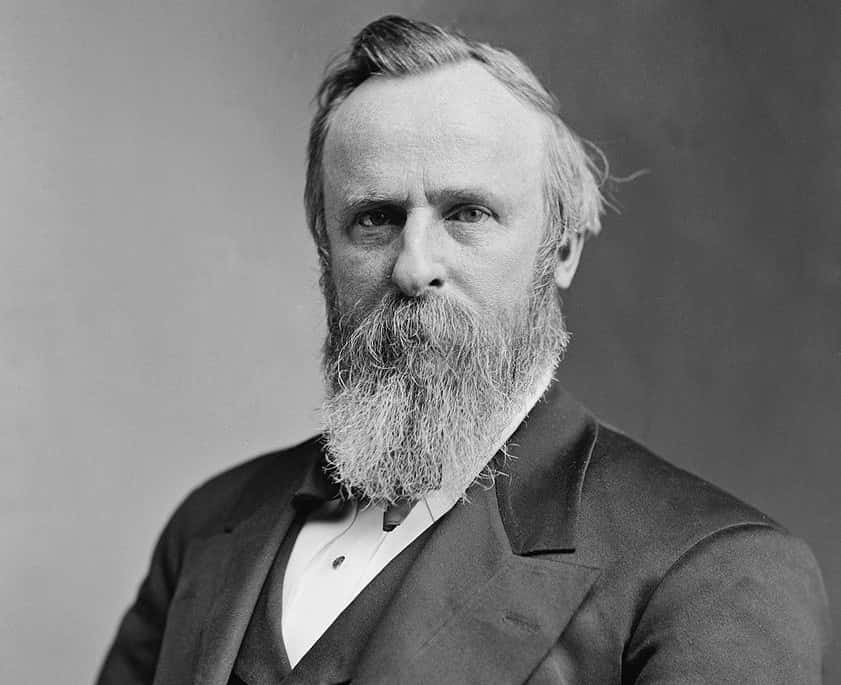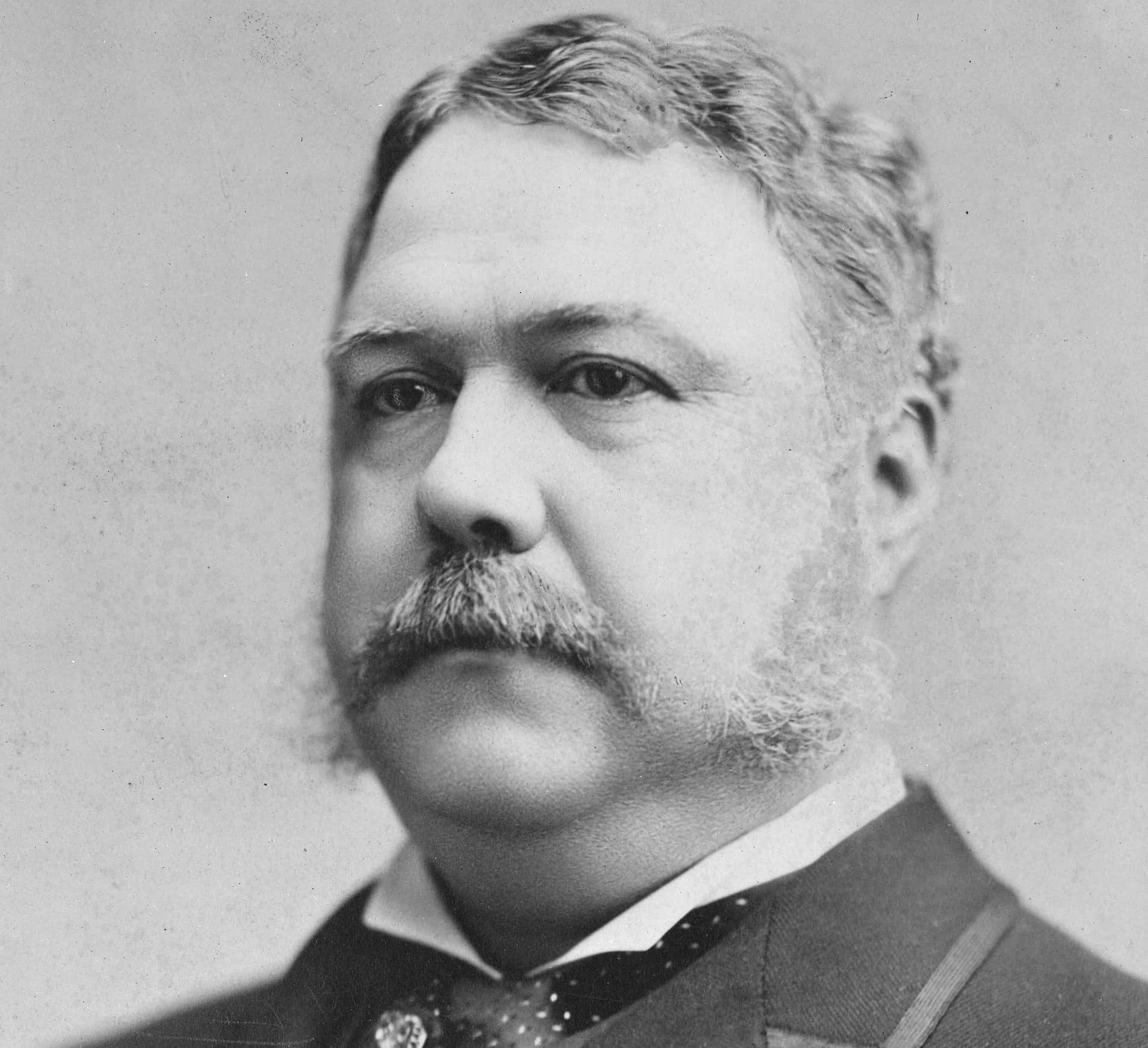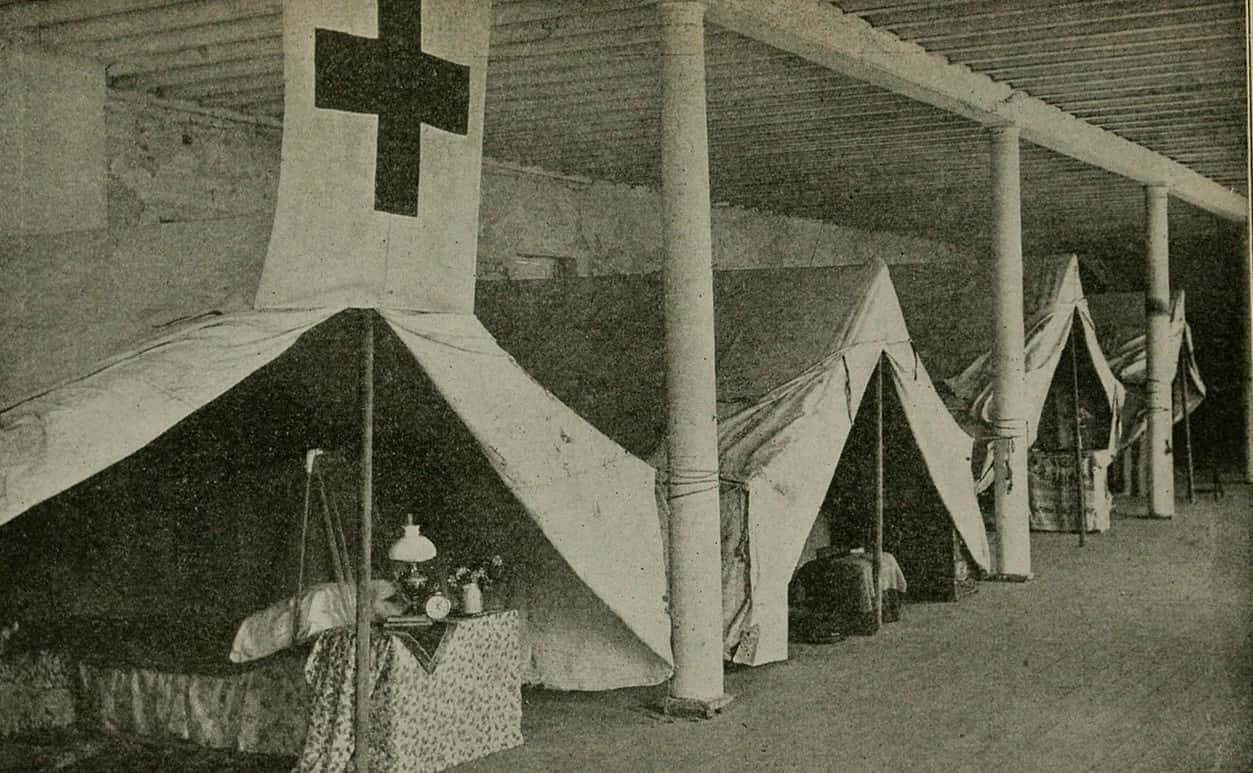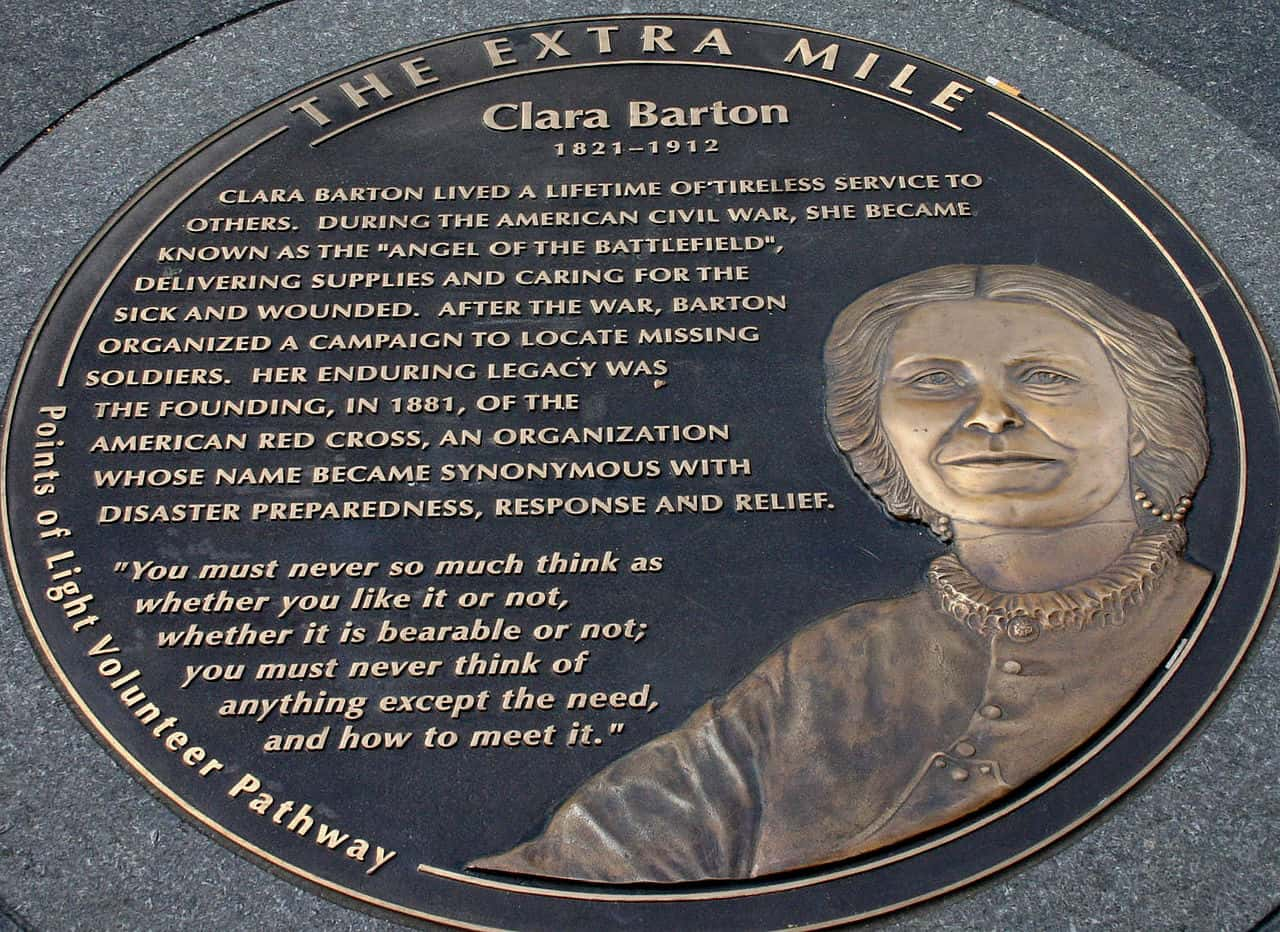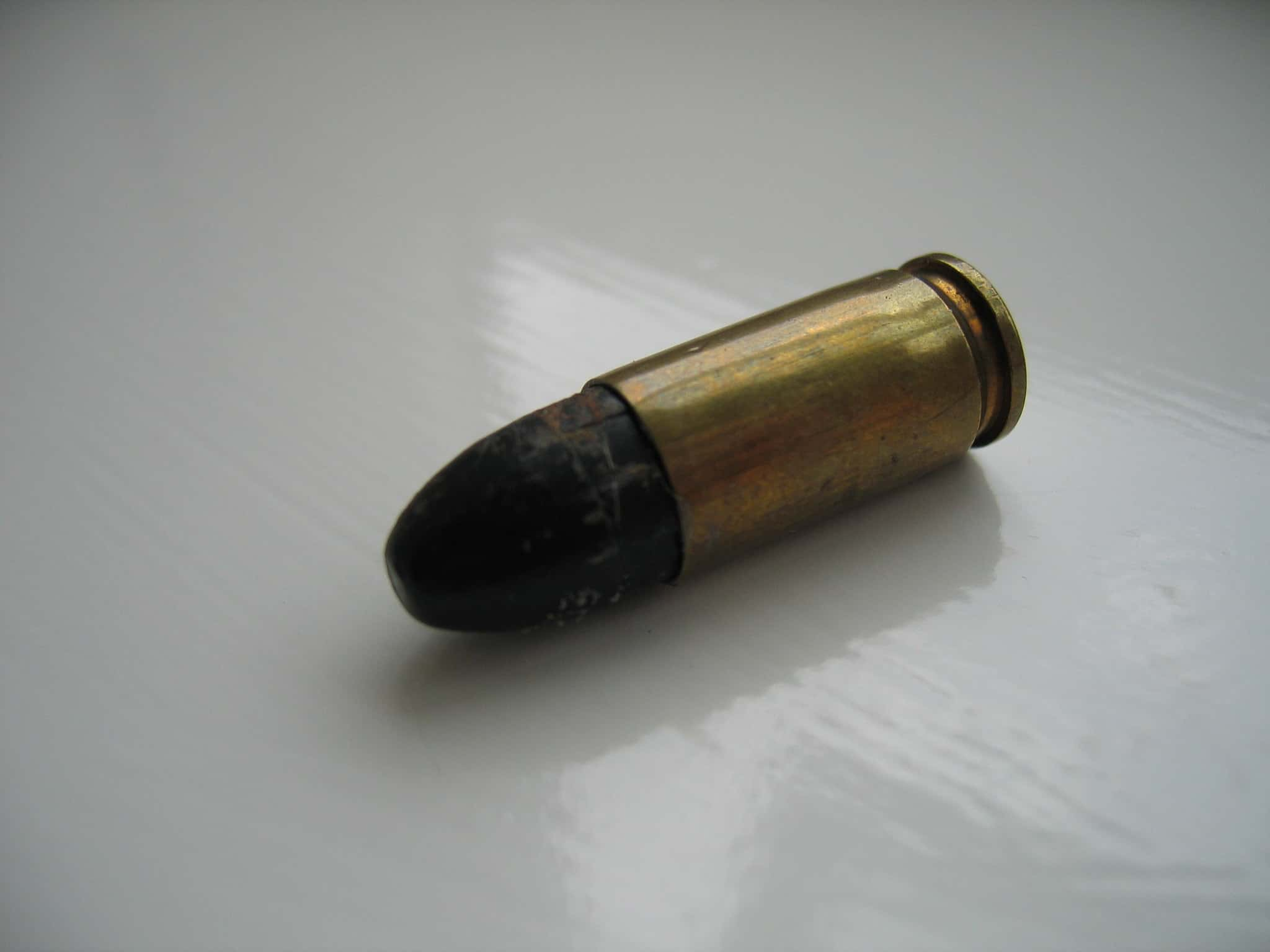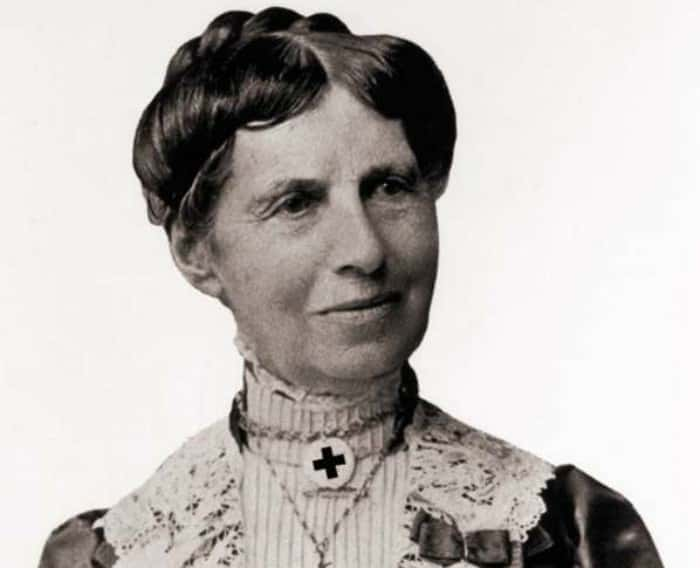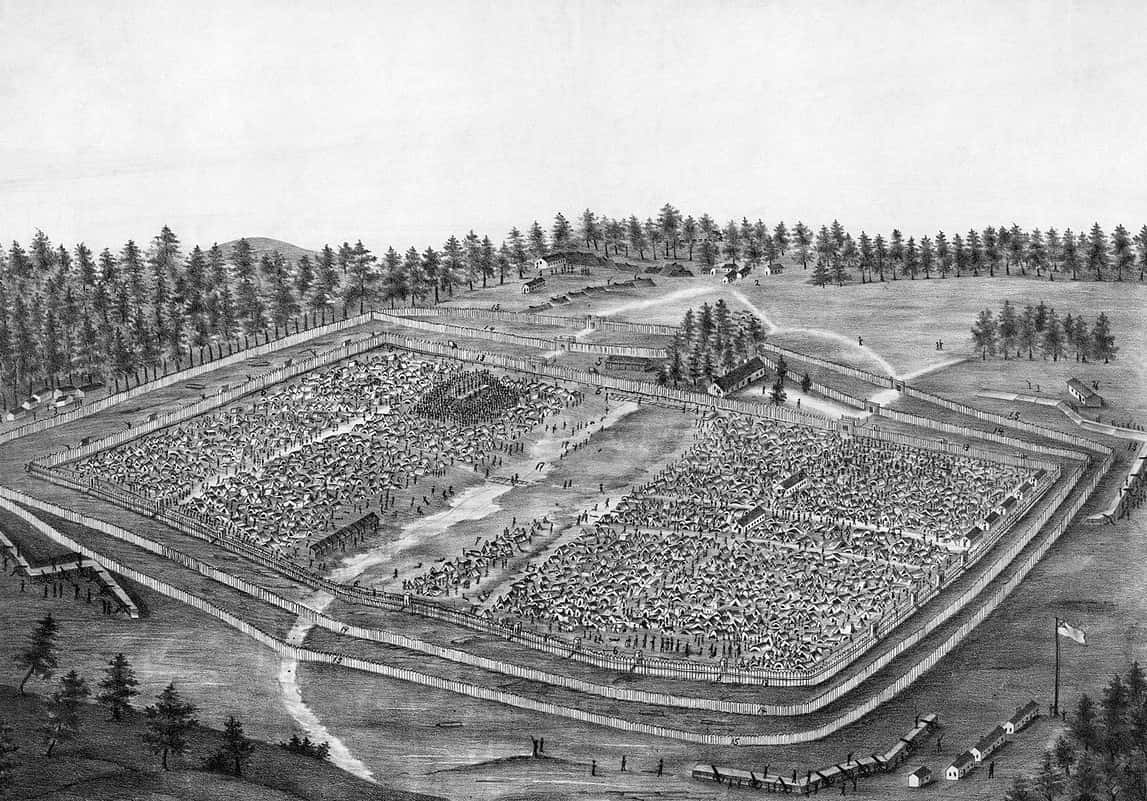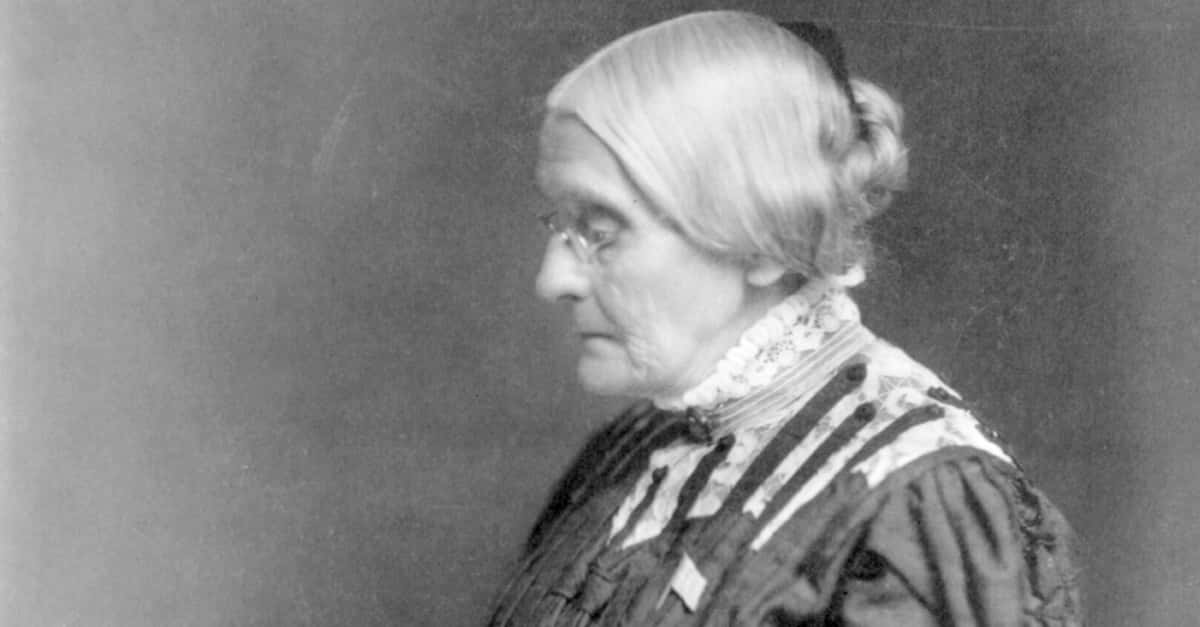In the history of great American women, it is hard to dispute that Clara Barton ranks very high. By the time she was 40, Barton had already achieved so much, defying sexism through her work as a teacher and within the US government. However, it would be what came after that which would truly cement her legacy as being one of the most heroic figures of her time. Find out more about her incredible life below.
1. She Was An Eyewitness to Atrocious Horror
Clara Barton is best known as the founder of the American Red Cross—but her desire to help others was born after witnessing the bloody brutality of conflict firsthand, where she worked close to the front lines to help wounded men. It wouldn’t be her only brush with danger…
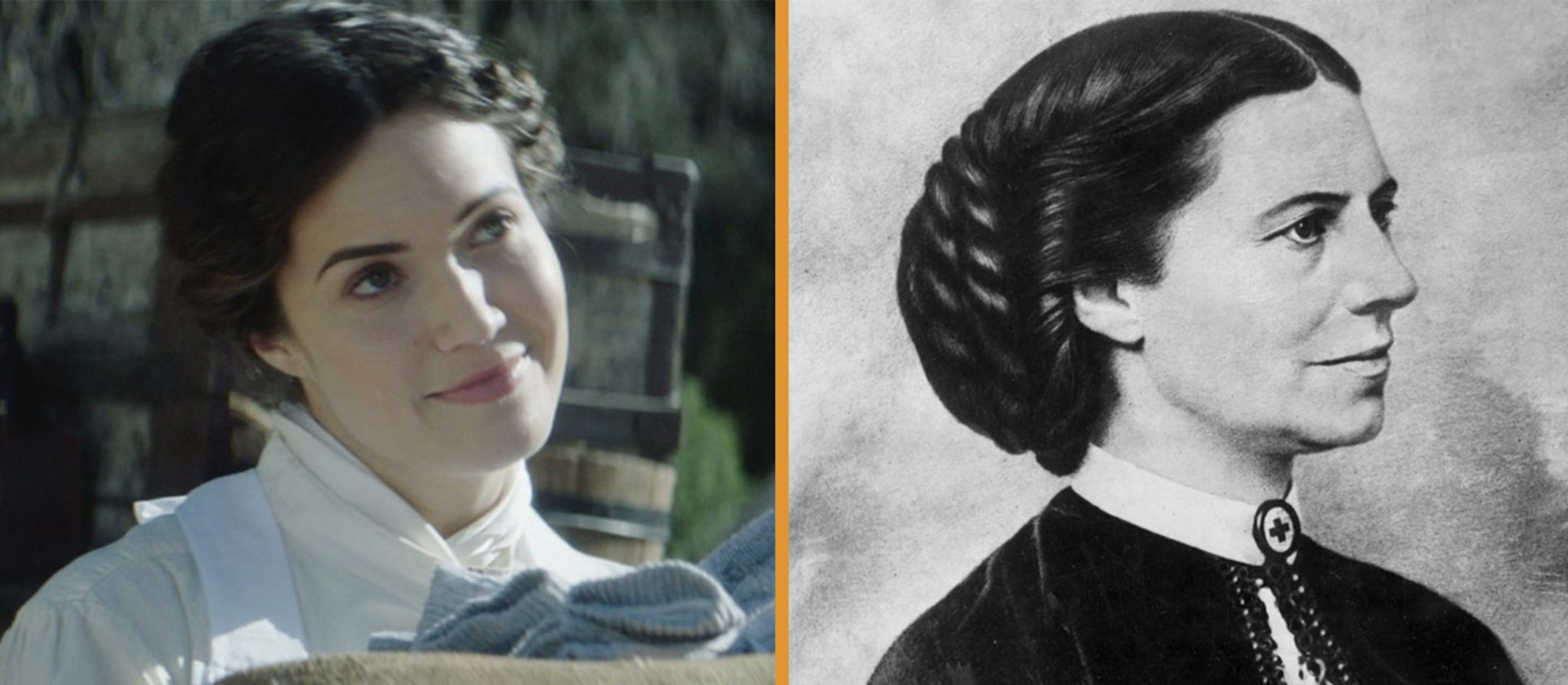
2. Her Father Was Very Political
Born on Christmas Day 1821 in the Massachusetts town of North Oxford, Clara Barton was the daughter of Stephen Barton, a militiaman and politician, and Sarah Stone Barton. Both her birthplace and her father, who was very politically active, would be a huge influence in her life.
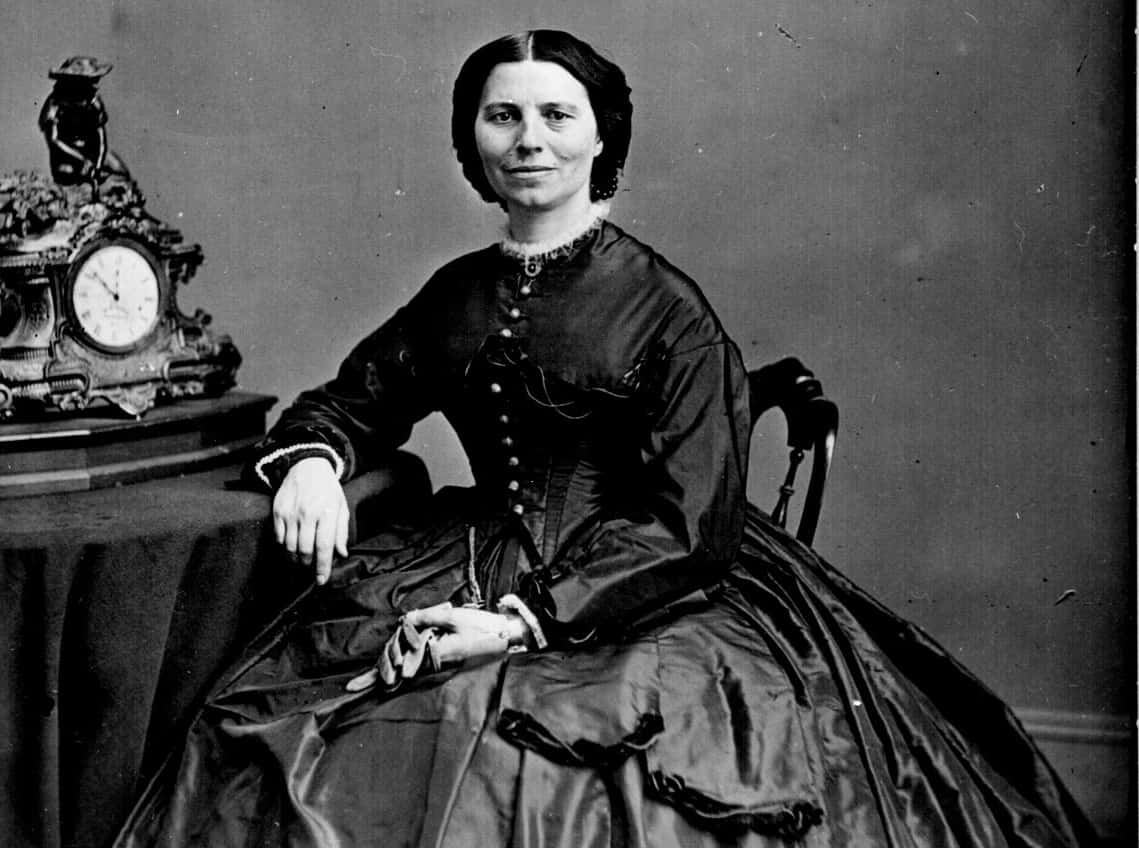 Wikimedia Commons, Mathew Brady
Wikimedia Commons, Mathew Brady
3. She Had a Near Miss
When she was just five, Barton had a terrifying brush with her own mortality. Barton herself would later write about how she was struck down with dysentery and convulsions. Her family was so despairing of Barton’s survival that a report actually went out that she had passed on. But then, Barton made a miraculous recovery—and later, this experience would inform her work.
4. She Was Horrified by Bloodshed
Barton was just six years old when she witnessed an ox slaughtered for its meat, and the experience changed her forever. From that point on, Barton became a vegetarian. Given her response to blood and guts throughout her adult life, we’re not surprised by that in the slightest.
5. She Nearly Lost Her Brother
When she was just 10 years old, Barton was witness to a horrible tragedy that changed her life forever. Her brother, David, fell from a barn roof and suffered a terrible head injury. Doctors worked to help him, but when his recovery stalled, they gave up on him—but Clara didn’t.
6. She Saved Him
Barton was determined to save her brother David in any way that she could. She taught herself how to administer David’s medications and looked after him. While doctors had thought that he’d never regain his health, David eventually made a full recovery, all thanks to Clara. She persevered when others said that she couldn’t—and it wouldn’t be the last time.
7. She Was Compassionate
Growing up on a farm, Barton was obsessed with animals. Under her brother’s instruction, Barton learned how to ride a horse by the time she was five years old. The first pet of her own was a white dog named Button, and she had a cat named Tommy for nearly 20 years. She may have taken comfort in the company of animals because she found dealing with other people difficult…
8. She Had Growing Pains
Barton was an incredibly shy young girl. Her childhood was a lonely one and she reportedly had just one friend during her school years. When Barton’s parents tried to enroll her in high school to help become less of an introvert, it was an utter disaster with life-threatening consequences.
9. Her High School Experience Was Horrible
After being sent away from home for the first time, Barton was paralyzed with anxiety at her new high school, and she became even more withdrawn. She began to drop weight and suffer from depression. It eventually got so bad that she was taken out of school and sent back home—and the struggle didn’t end there.
10. She Was Always Meant to Make a Difference
When Barton was eight years old, she was examined by a phrenologist—this long-since debunked branch of psychology claimed that the shape of people’s heads determined their life path. The phrenologist determined Barton would not only "always be good and helping people," but that she’d also make a great teacher.
Even a broken clock is right twice a day.
11. Her Family Rushed to Action
Following Barton’s breakdown at boarding school, she returned home—only to have her entire life uprooted. One of her cousins had passed on, leaving behind a wife and four children. Barton and her immediate family moved to the cousin’s farm, and she dedicated all of her time to supporting her cousin’s widow. However, this desire to help had a dark side.
12. She Couldn’t Stop
Whenever Barton would run out of ways to help, she would be ill-at-ease and uncomfortable. Without anything to do, Barton often felt like she was a burden on her family. While this unfounded anxiety must have made her miserable, it would also go on to drive her during the volatile times that were waiting for her around the corner.
13. An Accident Changed Everything
Barton was a tomboy at heart, and was at her best when playing or riding horses with her male cousins, but when an accident left her injured, her mother began to worry about her. She forced Clara to spend time with a female cousin, and it sparked a total transformation that would completely change her life path.
14. She Could Finally Live Her Life
Barton gained her first teaching certificate when she was 17 years old. She finally came out of her shell, and in contrast to her earlier timidity, she gained remarkable confidence as a teacher. It would go on to help her embark on the incredible adventures that awaited her as an adult.
15. She Could Handle Anything
Barton finally found a purpose in life as a teacher and used everything in her power to help her students. Her experience growing up as a tomboy meant that she was able to relate to her male students, even the wildest of the bunch. She had finally hit her stride—but tragedy was lurking around the corner.
16. Everything Fell Apart
In 1851, Barton suffered a terrible loss. Her mother, Sarah Stone Barton passed on, but the heartache didn’t stop there. The Barton family home then closed down. Untethered, Barton decided to leave her job as a teacher and do something completely different.
17. She Found Love
Barton left her teaching position to study at the Clinton Liberal Institute in New York—but knowledge isn’t all she found there. She immediately fit in, making friends with fellow students and faculty alike—and even had an ongoing relationship with an associate tutor that was called "the great romance of her life". Sadly, not all good things can last.
18. She Sacrificed Everything for Her Causes
Very little is known about Barton’s personal life. She never married or had children, but after her time at Clinton, she found another outlet for her passion and threw herself into yet another battle—one that would consume her life and leave her broken and bruised.
19. She Was a Renegade
Barton was teaching in a small New Jersey town when she learned that the neighboring community, Bordentown, had no public school. She was horrified—no one in Bordentown seemed to care. She became determined to open a school there and made a deal with a local trustee: she would make the school succeed—or, if it failed, she wouldn’t take any salary for her first three months’ work there. It was a risky bet for a woman on her own to make—but Barton wasn’t afraid.
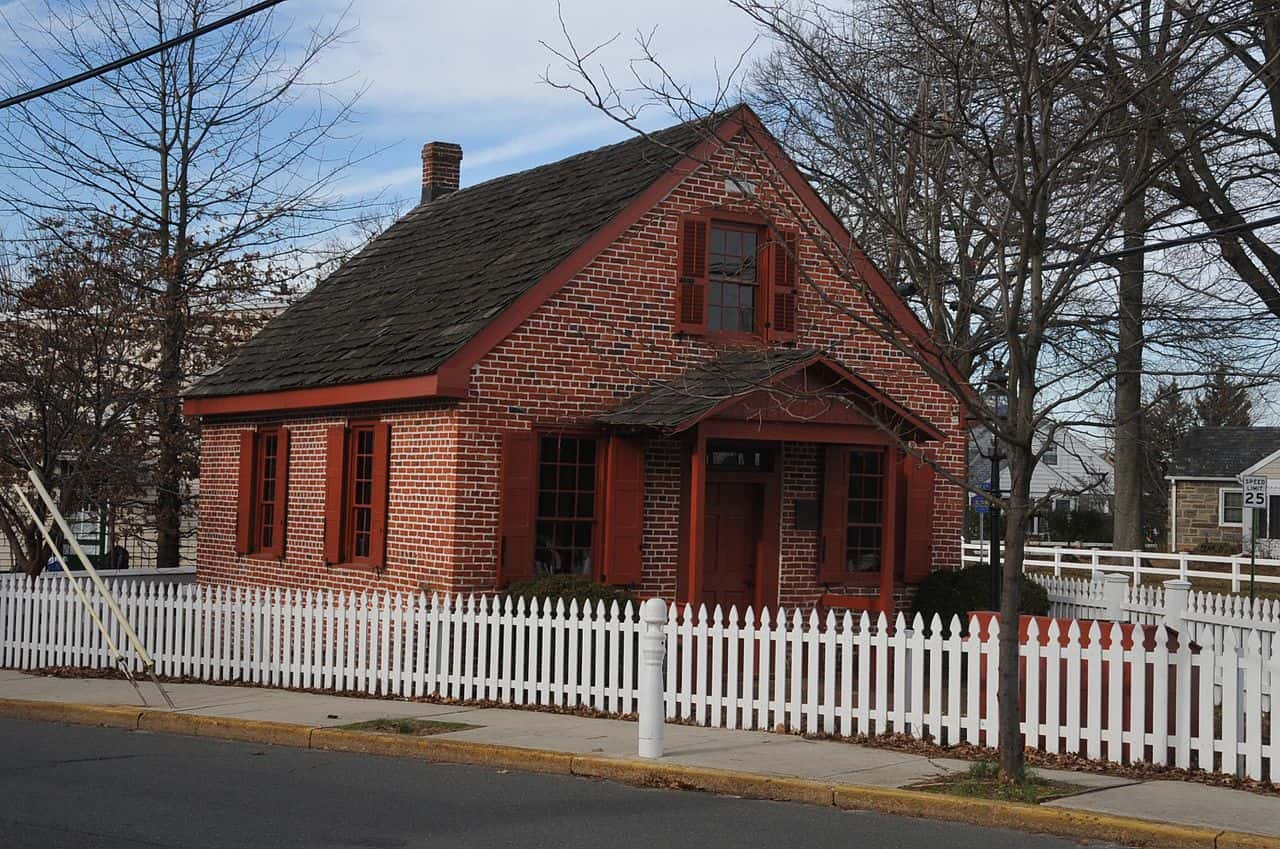 Wikimedia Commons, JERRYE & ROY KLOTZ MD
Wikimedia Commons, JERRYE & ROY KLOTZ MD
20. Her Risks Paid Off
Of course, anyone would be a fool to bet against Clara Barton. Her efforts at the Bordentown school proved so successful that she and another teacher were educating more than 600 people. This led to Bordentown raising $4,000 to provide a new school building—but soon, her great success would be met with a heartbreaking betrayal.
21. Sexism Strikes Again
Barton had not only established the free school in Bordentown, but she’d also made it into a huge success, building the student body from just six students to 600. But sadly, the town she’d done so much for turned on her in an instant. The town’s administration didn’t think that a woman could run such a large institution and they elected a man to replace her as principal.
Barton was demoted to the position of "assistant"—and then it got worse.
22. She Was Backed Into a Corner
Barton stayed on at the school, but the new work atmosphere took a horrible toll on her. It proved so hostile and strenuous that she suffered a nervous breakdown. After suffering insult and indignity from the very town she’d given so much to, she quit. Packing up her bags and leaving Bordentown, Barton set out on her next adventure—but sadly, her struggles didn’t end there.
23. It Was All a Façade
After leaving Bordentown, Barton was hired as a US Patent Office clerk—a job that was at times both radical and horribly demeaning. She was the first woman to hold such a high position in government, and she was paid the same as her male colleagues—but this progressive front hid dark horrors behind the scenes.
24. She Was Victimized
While her superiors may have paid her well, Barton was constantly abused and harassed by her male coworkers at the Patent Office. Then came another crushing hit: she was fired for her political views less than a year after being hired—but the story didn’t end there.
25. Each Defeat Only Made Her Stronger
Barton returned home beaten but not broken—and bided her time to strike back at those who’d wronged her at the patent office. When Abraham Lincoln was elected president in 1861, the political tides shifted, and she finally returned to the patent office—but her biggest and most dramatic challenge was yet to come.
26. She Jumped Into Action
When the American Civil War broke out, the first violent event was the Baltimore Riot—it took place miles away from where Barton was living in Washington DC, but the event would change her life forever. Barton had always thrived in a crisis, and she was waiting at the railroad station when the first waves of injured militiamen got to the city. When she saw them, she was shocked.
27. She Was Shocked by the Bloodshed
The men's injuries were horrific, they were hungry, and they had no supplies. Barton immediately led the charge to tend to the wounded—only to recognize some very familiar faces. Some of the militiamen had been her students during her years as a teacher. After the shock wore off, Barton knew what she had to do.
28. She Was Tireless
Barton personally collected food, clothing, and other medical supplies for the wounded men of the 6th Massachusetts Militia, but her aid went beyond the material, as she also provided emotional support to the men following the carnage of the battle. Barton gave everything she had—but the battle had just begun, and she was in for so much more.
29. She Brought Her Work Home…Literally
Barton sprung into action working to help the Union army by gathering and distributing medical supplies, even using her own home as headquarters for her operation—but strangely enough, she encountered resistance from the government and field surgeons, who thought that it was all the domain of men.
If she cared what they thought, she didn’t show it—she was determined to help the Union Army, and she’d prove them wrong in the process.
30. She Went to Battle
Remember the Clara Barton who was so timid that she had to drop out of high school? Well, when she was told that she had no place helping the men who were fighting, she not only said "wrong," she pushed to go to straight to the front lines—and she got her way. In 1862, authorities gave her permission to travel to the front lines and give direct assistance to the Union Army. What she witnessed shocked her—and propelled her forward.
31. She Was Right in the Middle of It
Barton would go on to treat injured men close to several major battles, including Cedar Mountain, Antietam, and Fredericksburg. As word spread about her altruism and bravery, she gained a sort of following of supporters who believed in her and the cause of the Union Army—one of whom was Senator Henry Wilson of Massachusetts. They became allies, close friends…and perhaps more.
32. More Than Friends?
Sharing a stance on the abolition of slavery, Barton and Wilson became very close, and he did everything in his power to help her gather supplies during her travels across the US as the conflict raged. There were even a number of rumors suggesting that Barton and Wilson had a secret romance, but if that’s true, they never admitted it. However, that doesn’t mean her life was without excitement…
33. She Found Love in a Hopeless Place
In 1863, Barton was traveling with the Union Army and assisting on the front lines. In the middle of the brutality and bloodshed, she found something completely unexpected. It was there that she embarked on a romantic relationship with John J. Elwell, a colonel in the army—however, that small matter of there being a national conflict soon got in the way.
34. She Couldn’t Turn Away
Even while facing the bloody aftermath of the era’s worst battles, Clara Barton refused to discriminate when it came to treating men that were injured. Regardless of her loyalty to the Union, Barton would treat all of them, whether they wore blue or gray coats.
35. She Saw the Worst of Humanity
The Battle of Fredericksburg was a ghastly affair that took place in the winter of 1862—and Barton was right in the middle of it. She was fully immersed in the treatment of injured and fatally wounded men. Casualties of that battle were more than 13,000 Union and 5,000 Confederate men. However, bearing witness to the horrors of that battle had devastating consequences for Barton.
36. It Took a Horrible Toll
In Barton’s personal letters where she talks about Fredericksburg, she revealed the fallout that she’d suffered following the Battle of Fredericksburg. These types of effects would likely be identified today as symptomatic of PTSD.
37. She Had a Following
Barton’s name soon became well-known, but that never stopped her from spending her time with more menial tasks like cleaning field hospitals, dressing wounds, and feeding the men. She was such a popular figure that when she called for supplies, she’d often receive much more than was needed—but at other times, things got truly dire.
38. She Improvised to Save Lives
The ghastly battle of Antietam is known for being the single bloodiest day in American history—and Barton found herself in an utterly horrible position. Supplies were terribly low, and so many were injured—so she worked with what she had. She wound up bandaging some men’s wounds with corn husks. It was a horrific time—but the worst was yet to come.
39. She Put Her Money Where Her Mouth Was
On top of everything else she gave to help the Union Army, most of Barton’s expenses during that era were paid for out of her own pocket. Such was her dedication, however, that she never minded, and strove only to raise funds from others to further the treatment of injured men. Eventually, her expenses were reimbursed by Congress.
40. She Had a Haunting Nickname
Due to Barton’s tireless work in assisting the men wounded in battle, as well as her ability to arrive just in time to front lines with whatever supplies that she could muster, Barton became known as the "Angel of the Battlefield".
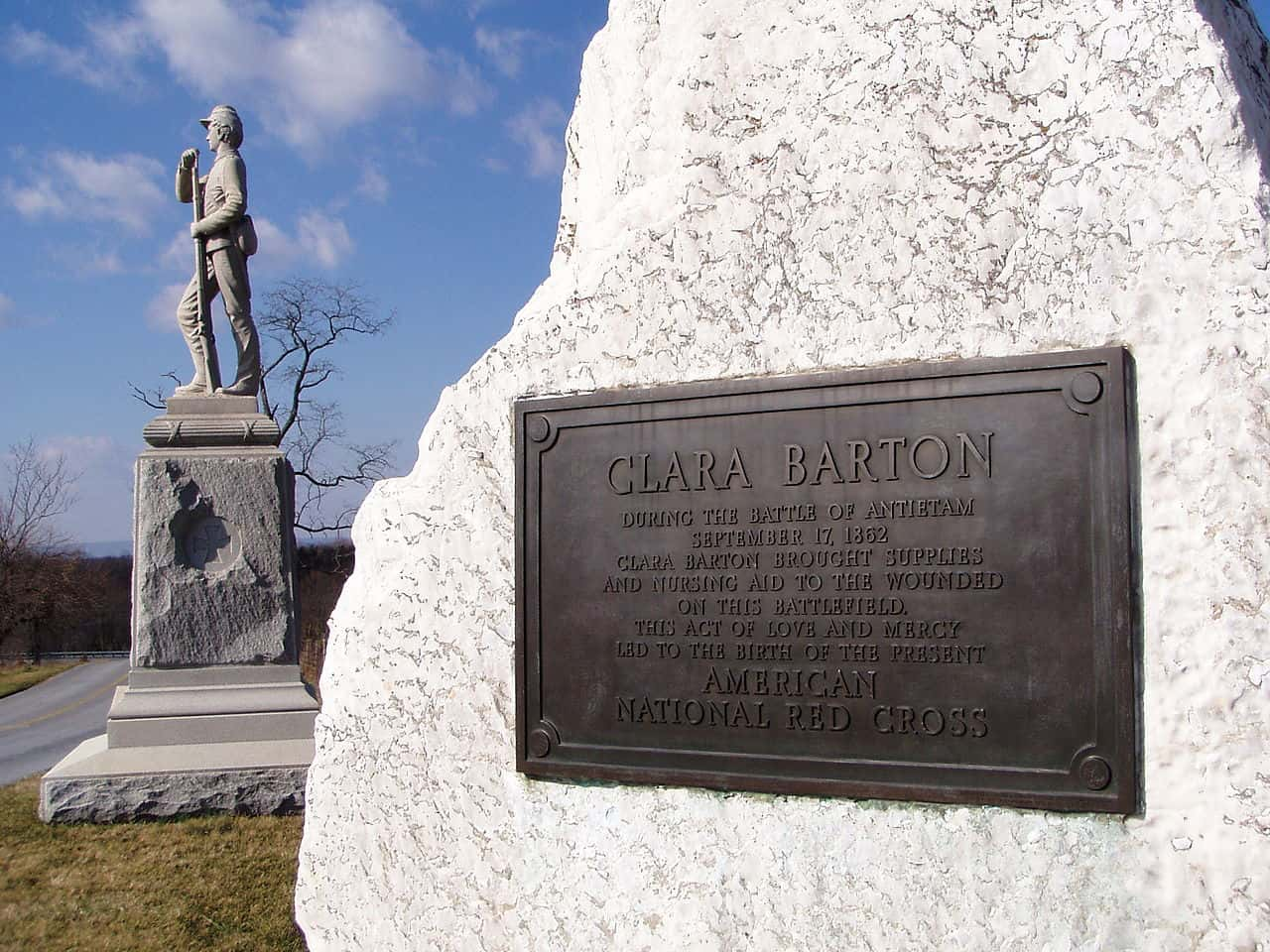 Wikimedia Commons, Chris Light
Wikimedia Commons, Chris Light
41. She Couldn’t Stop Herself
Even after the conflict was over, Barton was determined to help the men who'd bravely fought and their families. When Barton discovered that many men who'd fought had been buried in unmarked graves, she was horrified. Their whereabouts were completely unknown, leading to them being listed as "missing". The government was thus flooded with distraught letters from families begging for information about their "missing" relatives.
Of course, when Barton learned this, she knew her job was far from over.
42. She Found a New Cause
Barton acquired permission to provide official responses to the oft-unanswered letters. In addition to Barton answering letters looking for news about missing men, Barton set up the Office of Missing Soldiers in Washington DC—and she faced a nearly insurmountable battle.
43. She Faced Devastating Everyday
Barton worked tirelessly to bring closure and peace to the families of men who had been originally marked as missing. Beginning in 1865, Barton and her assistants helped locate and identify the bodies of 22,000 men originally marked as "missing". It was an exhausting and dark task.
44. She Never Stopped Fighting
While Barton was traveling across the United States following the end of the conflict, she would frequently cross paths with figures like Susan B. Anthony and Frederick Douglass. As a result, Barton took up the cause of women’s suffrage. She would campaign for the right to vote to be granted to women—and she had a great argument for it.
Barton would point out to veterans that they owed their lives to women like her—so why shouldn’t women get equal voting rights to men?
45. She Worked Herself to the Bone
From 1865 to 1868, Barton embarked on a country-wide tour. She lectured on her front line experiences to crowds across the United States. By the end of her tour, however, Barton was so exhausted that she was urged by her doctor to take time away. She acquiesced—but Clara Barton was never that good at relaxing, and it wouldn’t be long before she found herself in the middle of another bloody conflict.
46. She Had a Lightbulb Moment
Under doctor’s orders to get away from her harrowing experiences during the battles and their aftermath, Barton went to Europe. In 1869, an acquaintance introduced Barton to a book titled A Memory of Solferino by Henry Dunant. Their points of view aligned—Dunant called for services to be established that would remain neutral and provide aid during the conflict.
She then traveled to Switzerland to meet Dr. Louis Appia, one of the men who had worked with Dunant to create the Red Cross Society. It was a game-changing moment for Barton.
47. She Couldn’t Stay Away
Even after her horrific experiences on the battlefield, Barton was quick to help when the Franco-Prussian War broke out in Europe. Barton arrived on the scene in 1870, offering her services despite the fact that she was still recovering from her previous breakdown. It was here that she finally saw the Red Cross in action, and she was sufficiently impressed by their organization to try and bring it to the US.
48. She Was Recognized for Her Work
For her many actions in healing men on the battlefield, as well as her tireless work to assist the civilians caught in the crossfire of the conflicts in Europe, Barton was awarded the Prussian Iron Cross and the Golden Cross of Baden—but she didn’t stop there.
49. He Was on the Wrong Side of History
Returning from Europe, Barton met with Congress and President Rutherford B. Hayes to set up an American branch of the Red Cross. However, she once again fought an uphill battle dealing with short-sighted men. Hayes was adamant that the Americans would never face a calamity like the Civil War again, and so why would the Red Cross be needed—but Barton knew exactly how to respond.
50. She Persevered
Barton pointed out that the Red Cross could provide aid during natural disasters—only to be utterly devastated when Hayes still rejected her idea. Luckily, timing is everything, and when Hayes left office, his successor President Chester Arthur got behind Barton’s cause.
51. Retirement Wasn’t for Her
Barton served as the President of the American Red Cross from 1881 to 1904, when she retired at the age of 83. Even then, she wasn’t finished. After her retirement from that position, she founded the National First Aid Society.
52. She Lived Long
After a battle with pneumonia, Barton passed at home on April 12, 1912 at the age of 90. She left the world peacefully, after having faced more than her fair share of near misses.
53. She Nearly Lost Her Life
Being a nurse on the front lines will naturally lead to close calls and harrowing moments—but for Barton, one incident was a thousand times worse than anything she’d experienced before. She was treated an injured man close to the front lines when a bullet suddenly struck her dress. She was shocked—and then she looked down, and horror filled her heart.
54. She Never Fully Recovered
Barton’s patient had been killed by the stray bullet that had also hit her. For someone like Barton, it was a devastating strike. She’d been in the process of helping the young man when his life had been snatched away in front of her eyes by senseless brutality. It would haunt her for the rest of her life—as she later commented, "I have never mended that hole in my sleeve".
55. The Horrors Didn’t Stop When the Battles Ended
As part of her mission to identify men who went missing during the conflict, Barton came face to a face with a living nightmare. She worked with the horrific Andersonville Prison, where more than 45,000 Union prisoners had been kept in appalling conditions by the Confederate army. What she found was utterly gruesome.
56. She Saw the Worst Humanity Had to Offer
Barton thought that she’d work for one summer at the Andersonville Prison, sorting through the evidence in order to identify any missing men. She ended up spending the next four years of her life there. When it had been in operation, the site had been overcrowded, riddled with disease, and the prisoners had been deprived of food and water. More than 13,000 Union men passed on from injuries or illness there.


